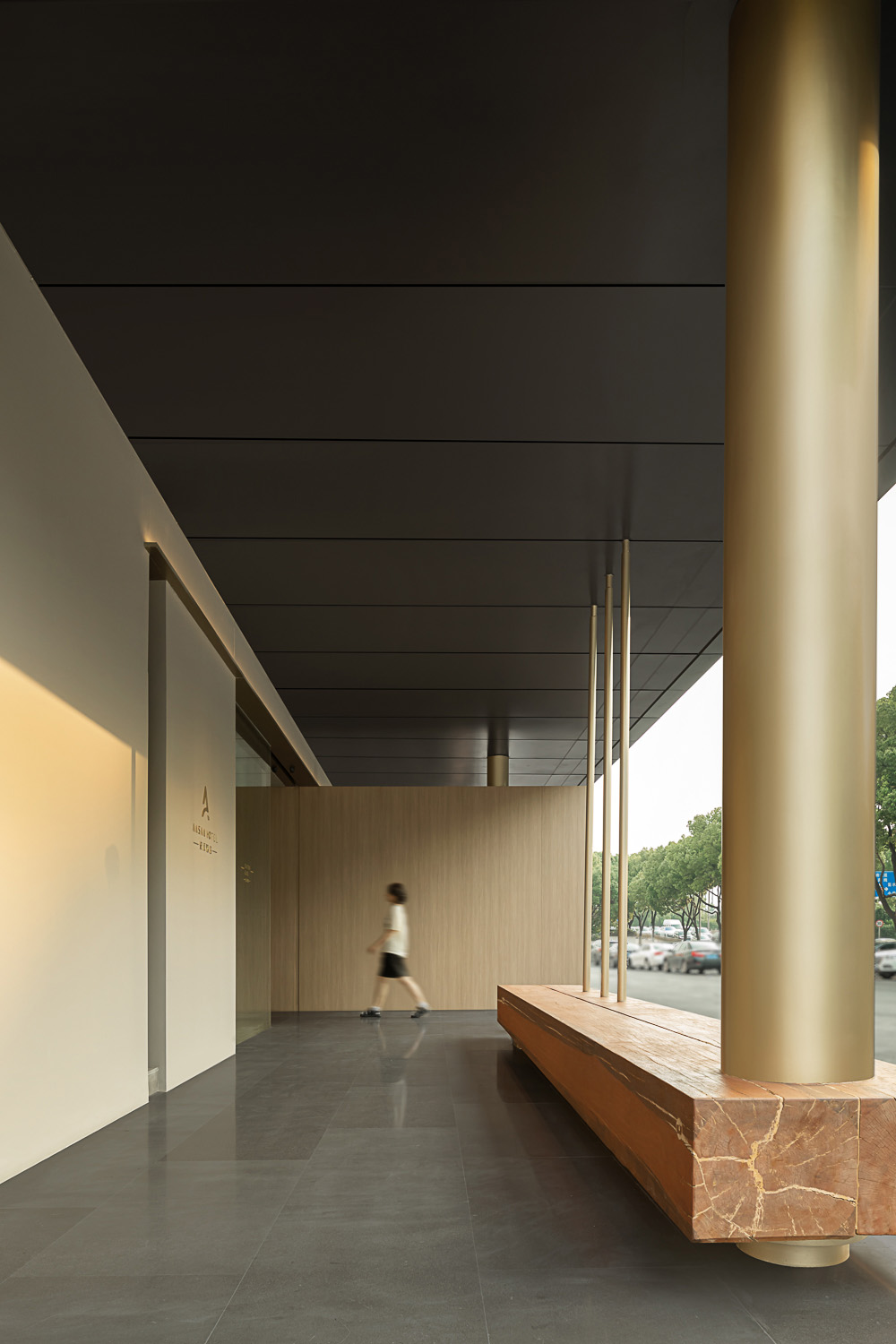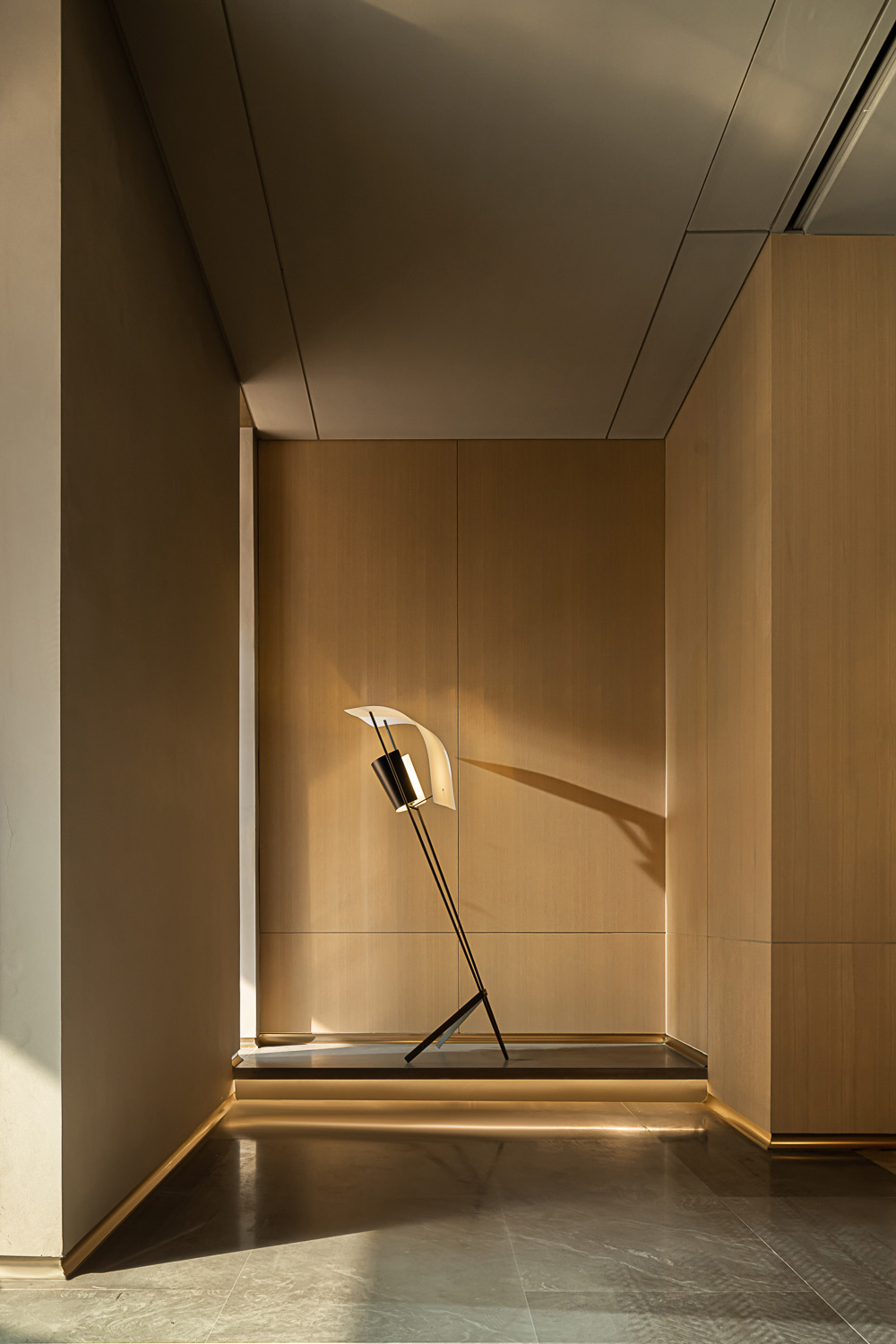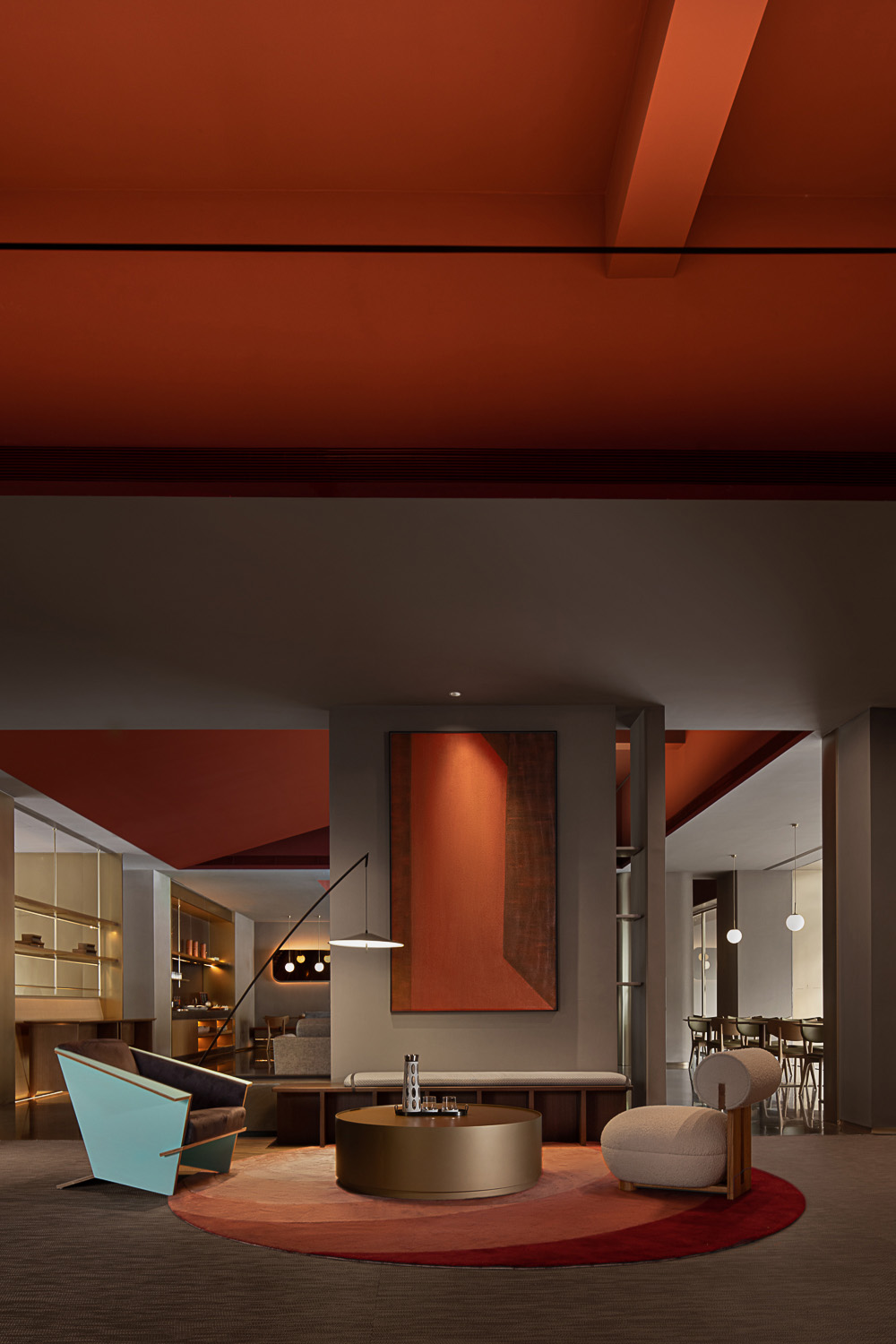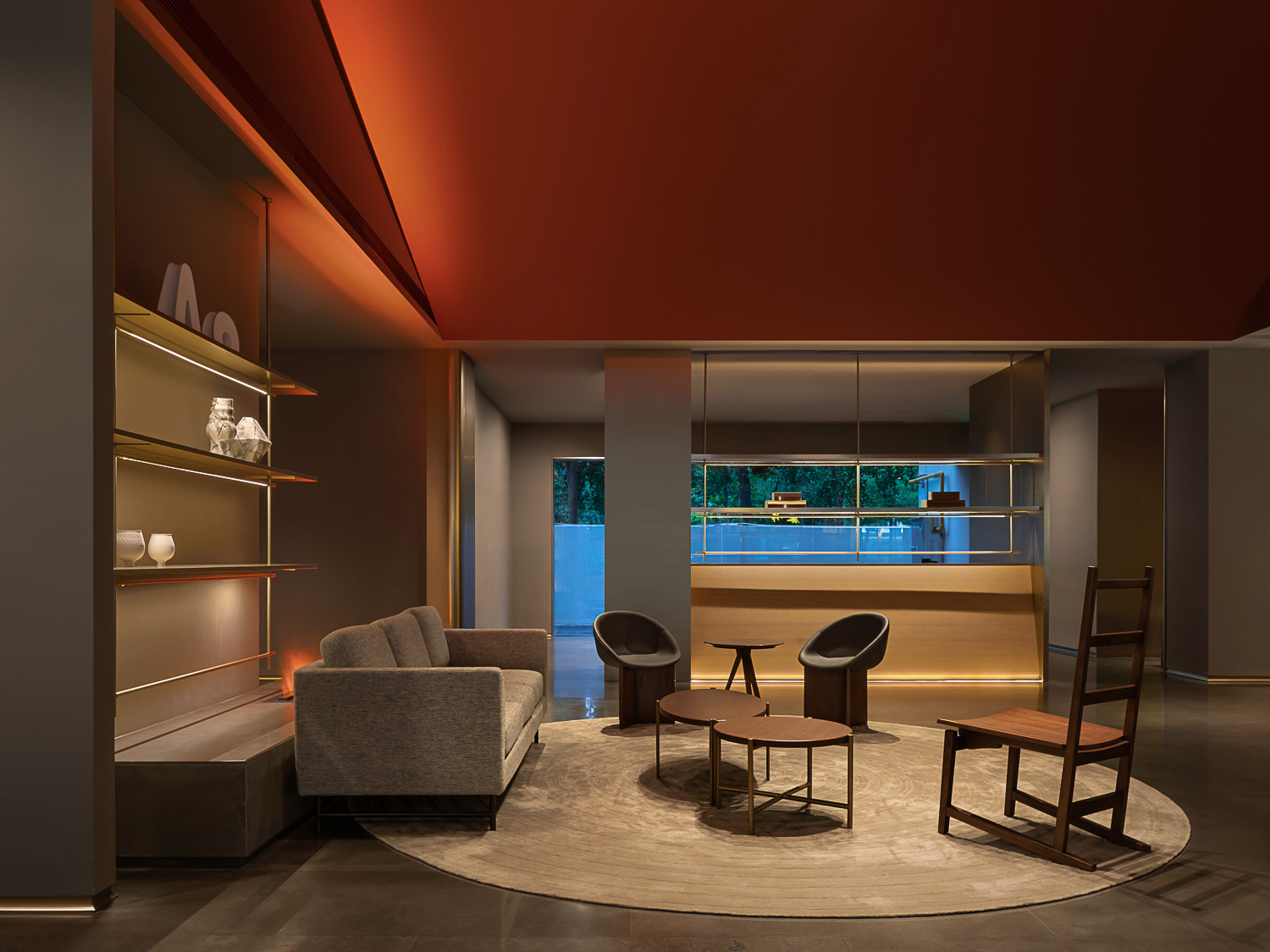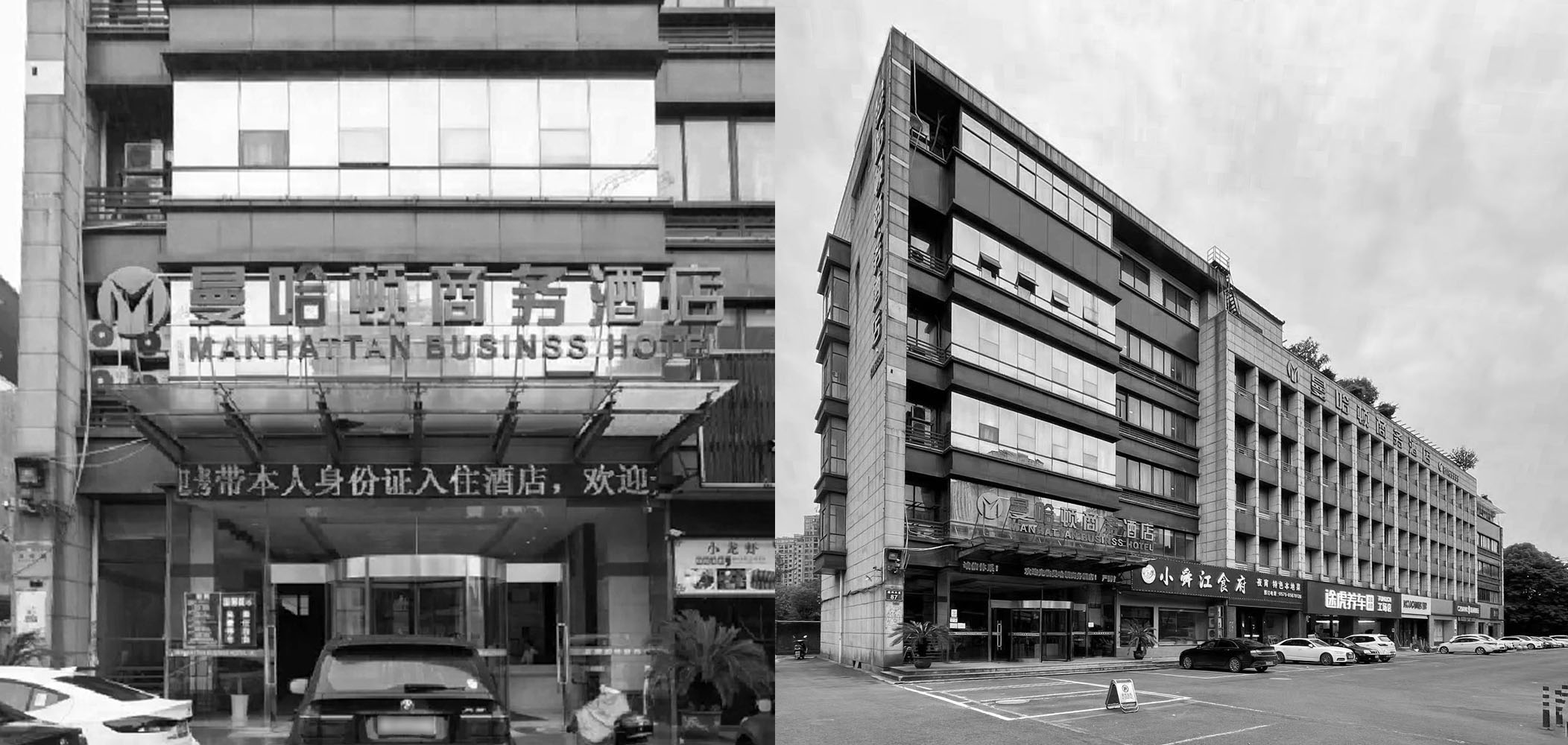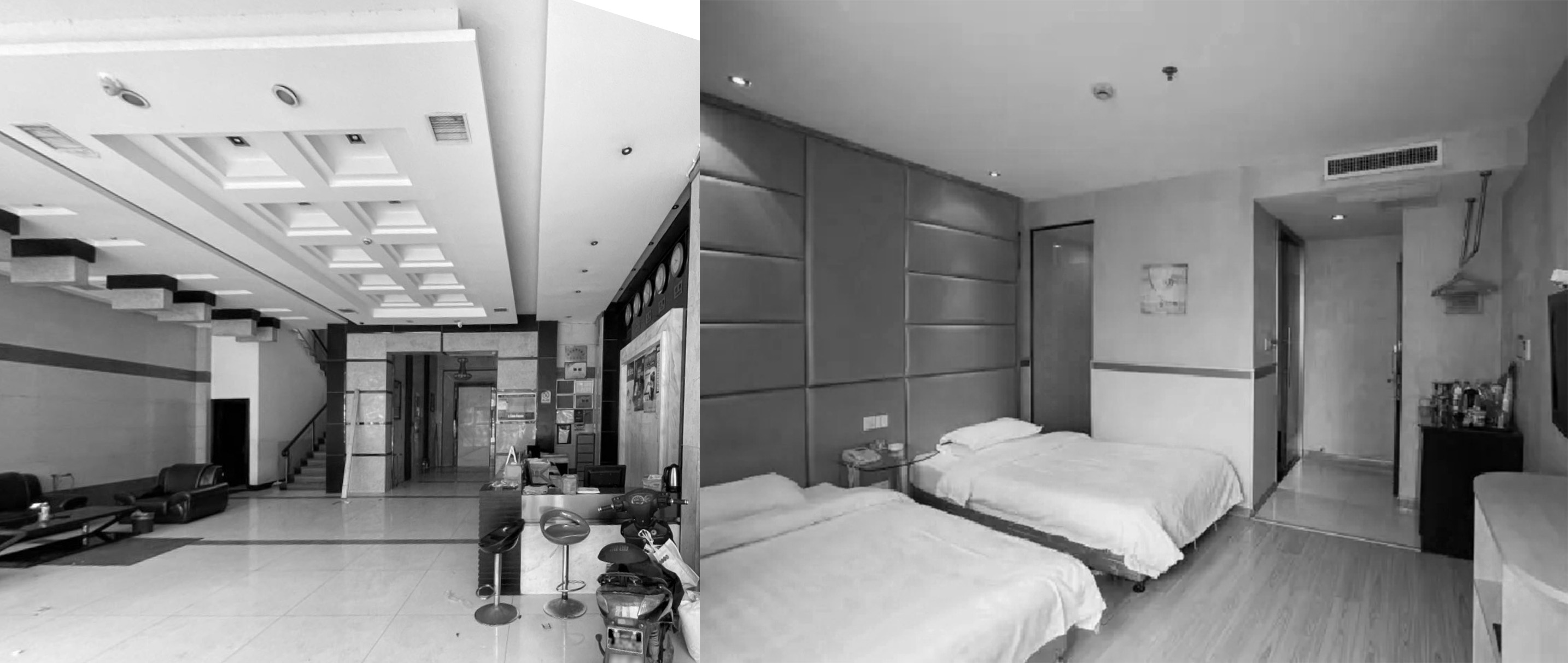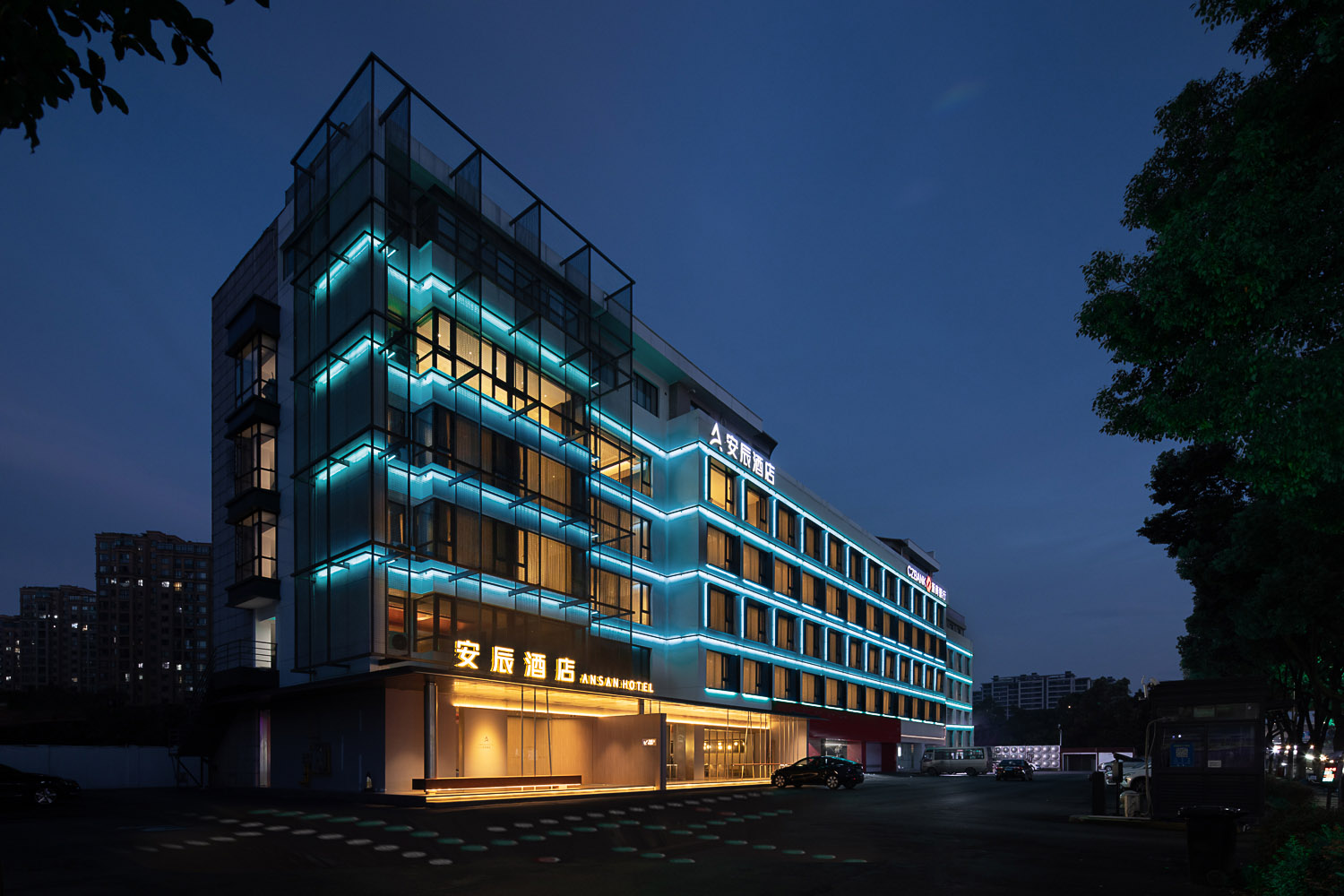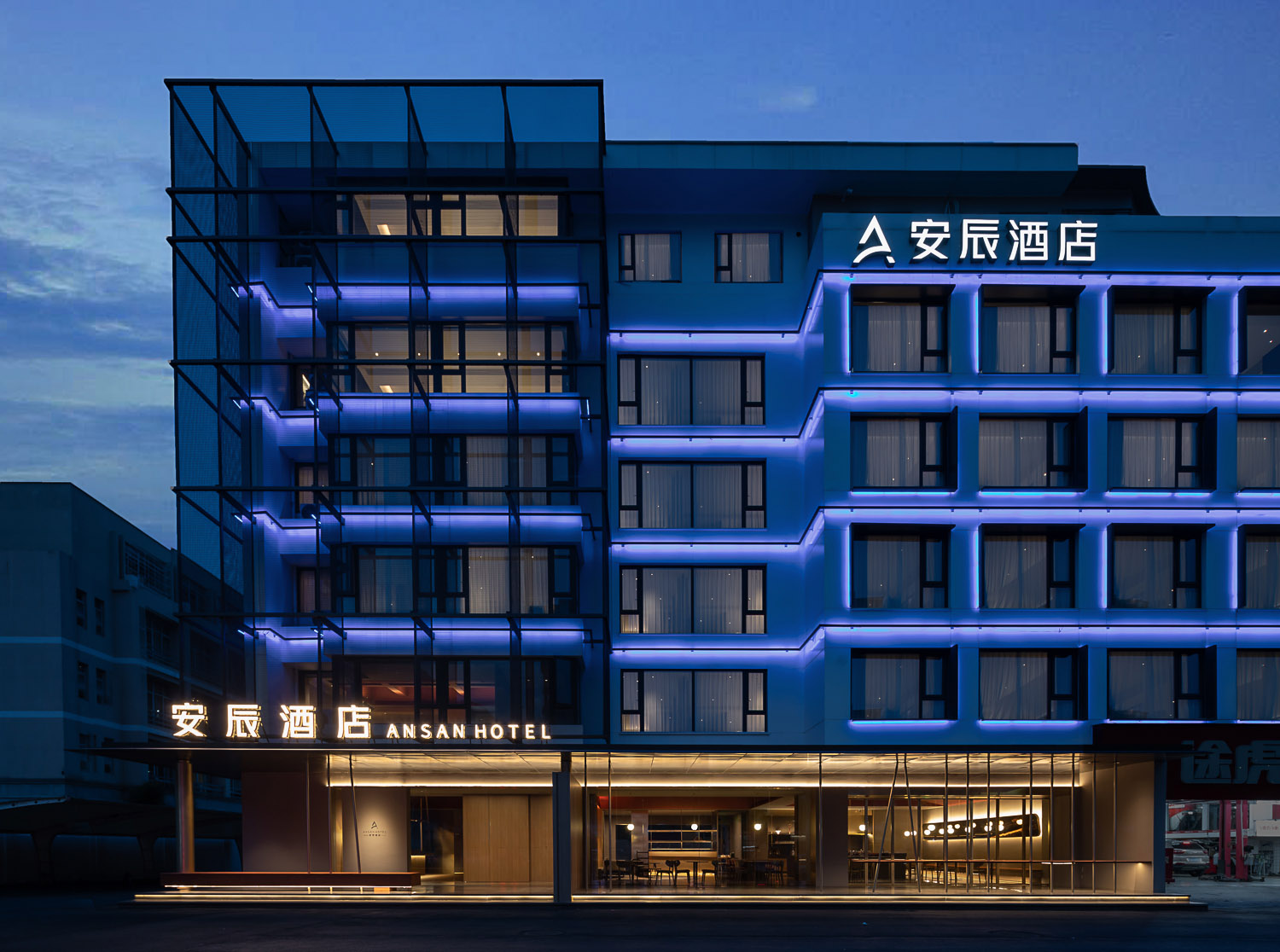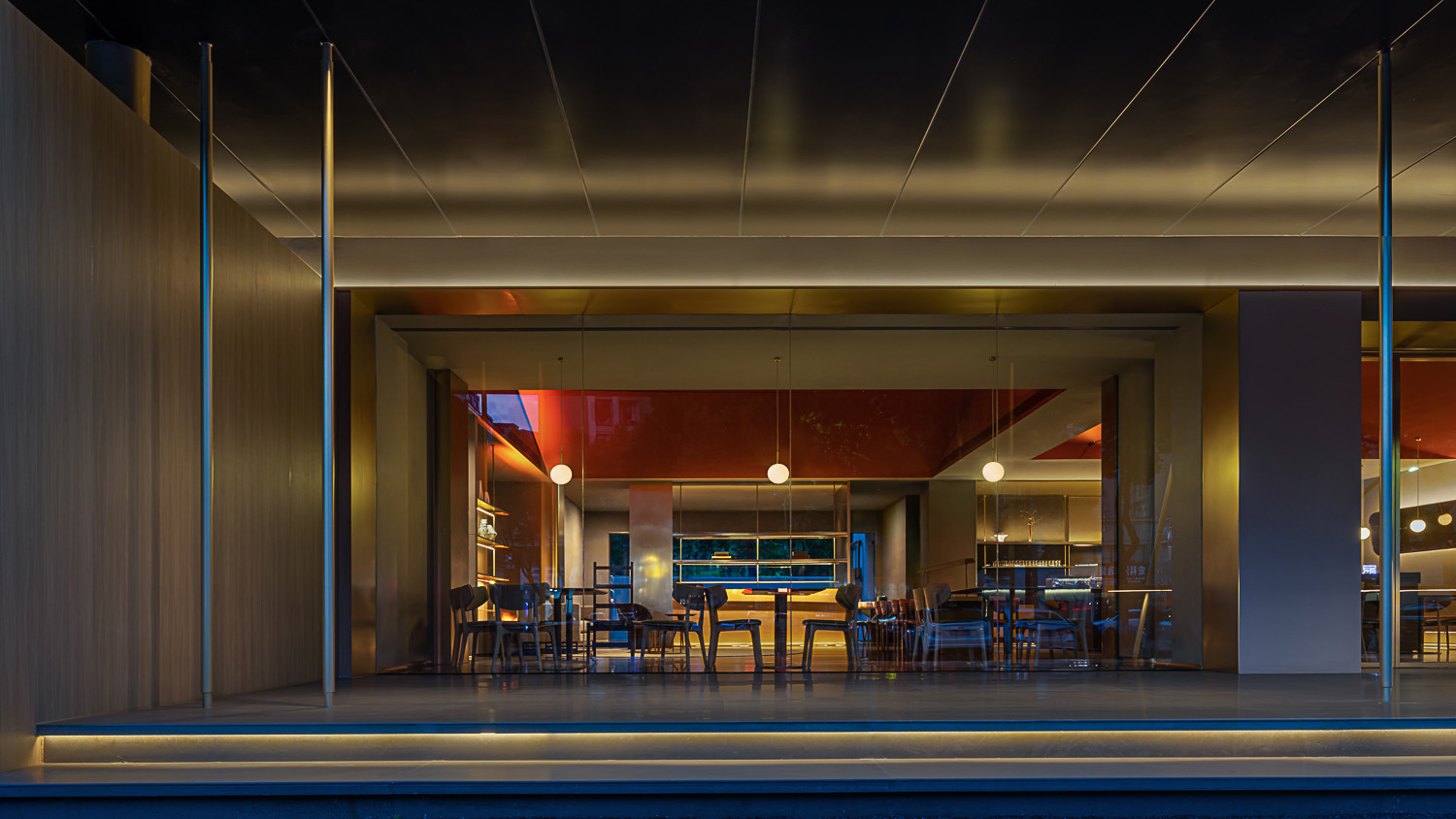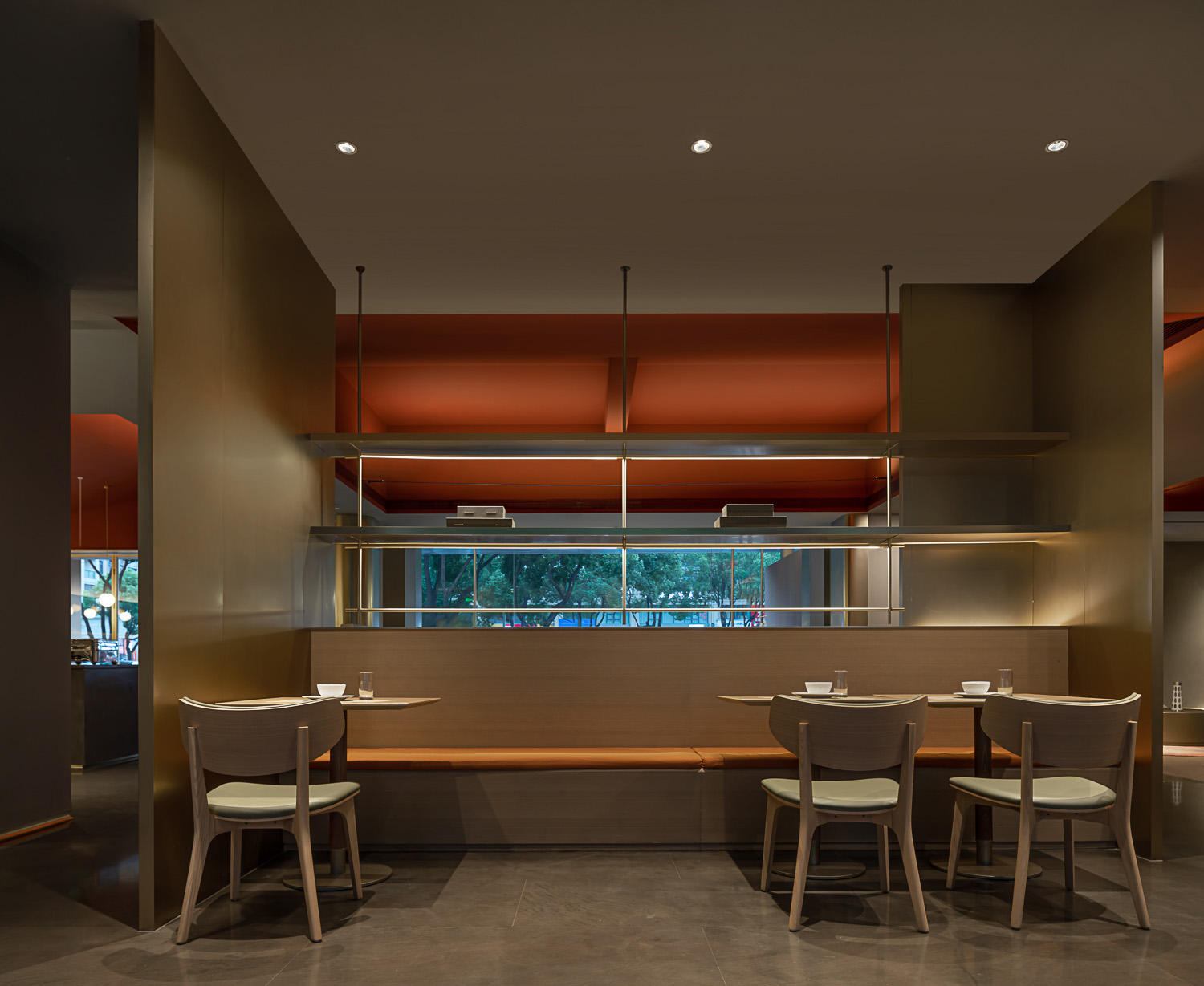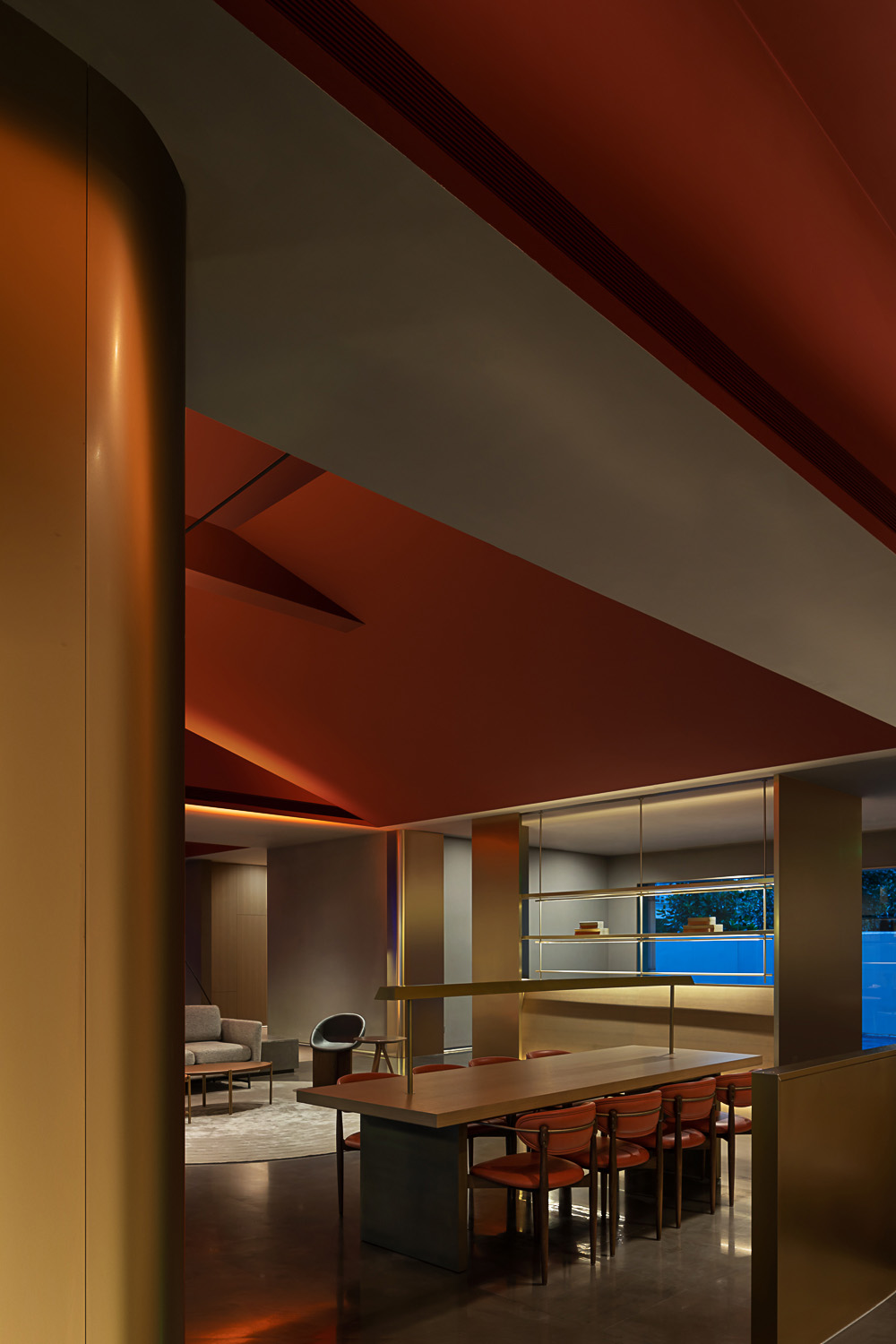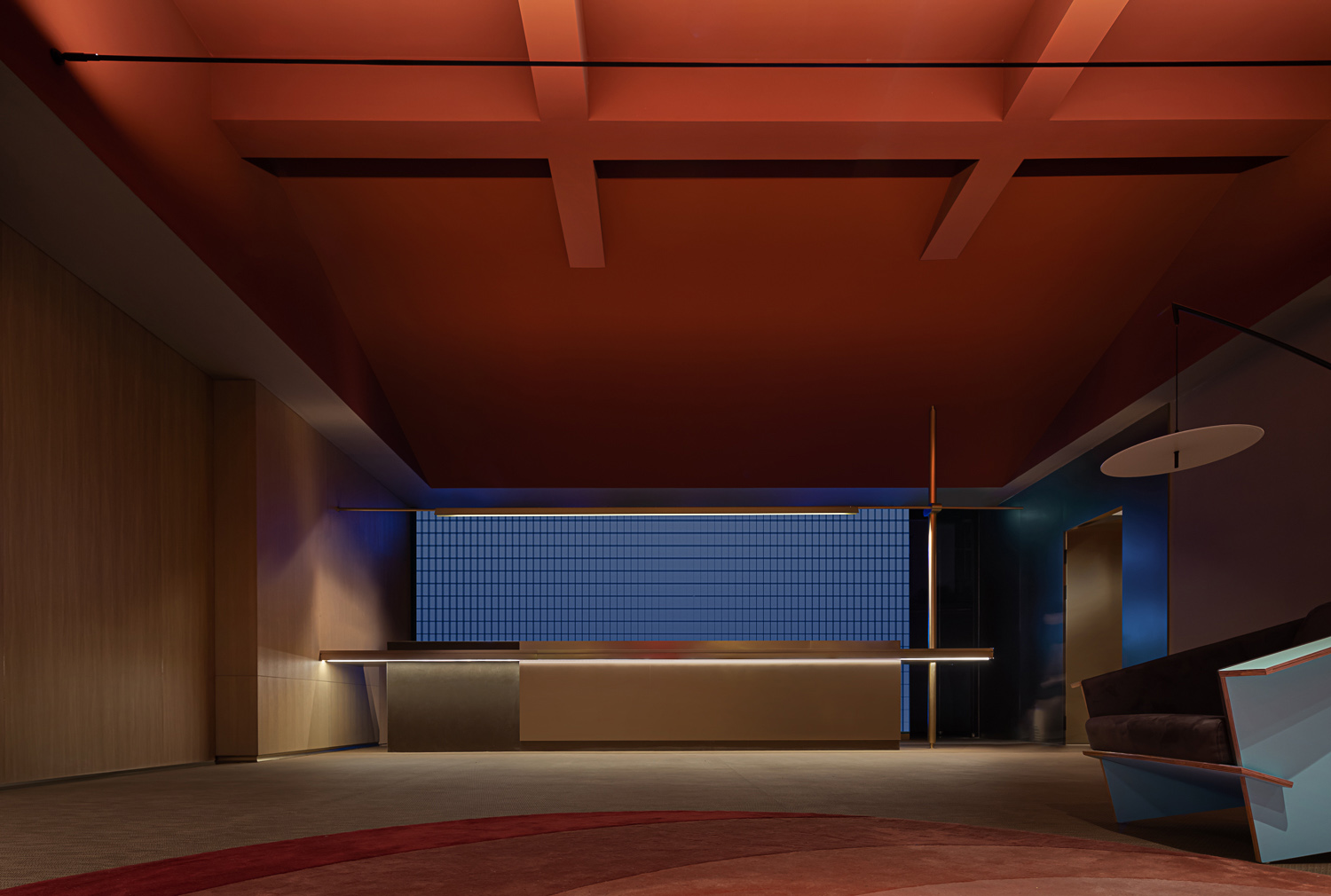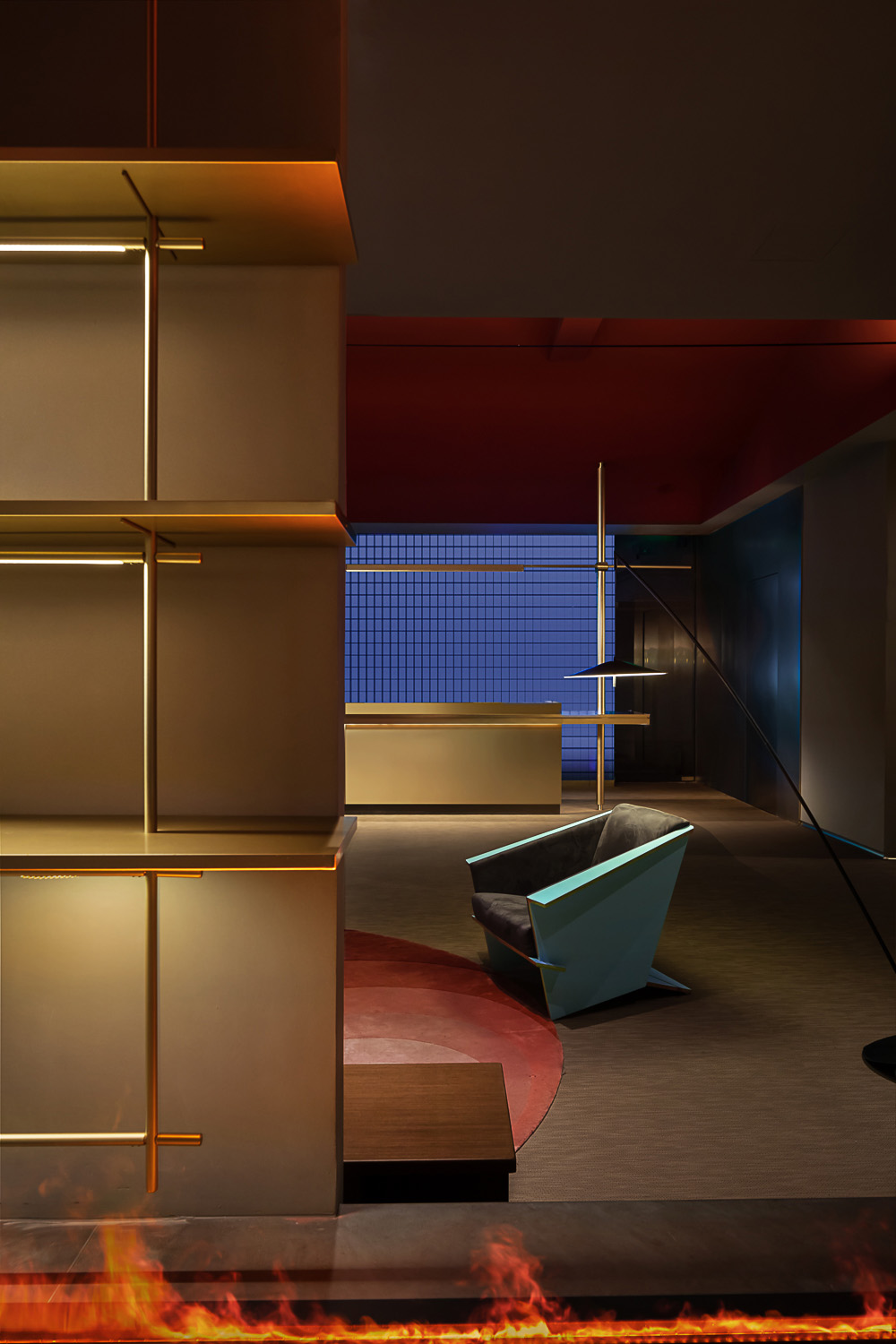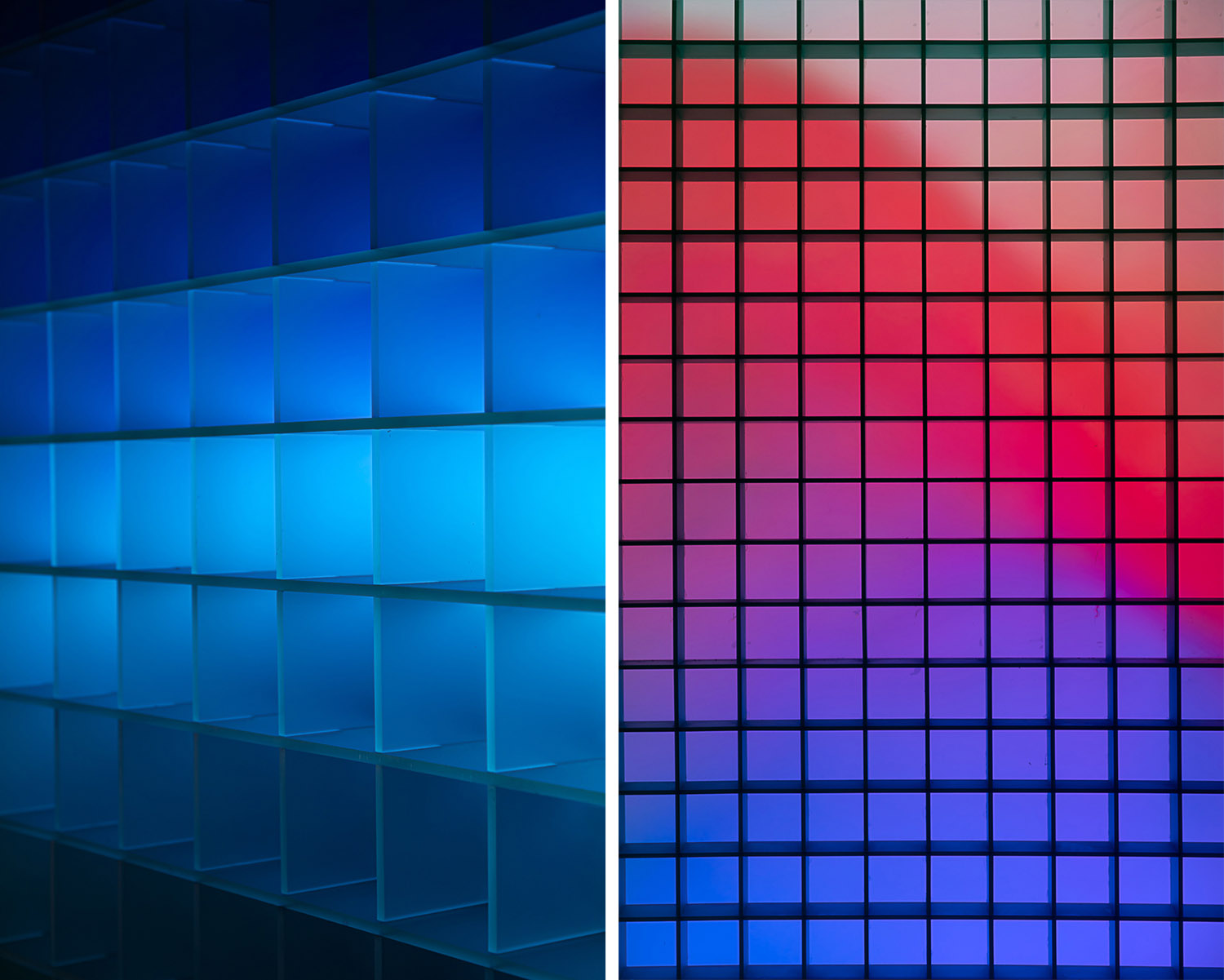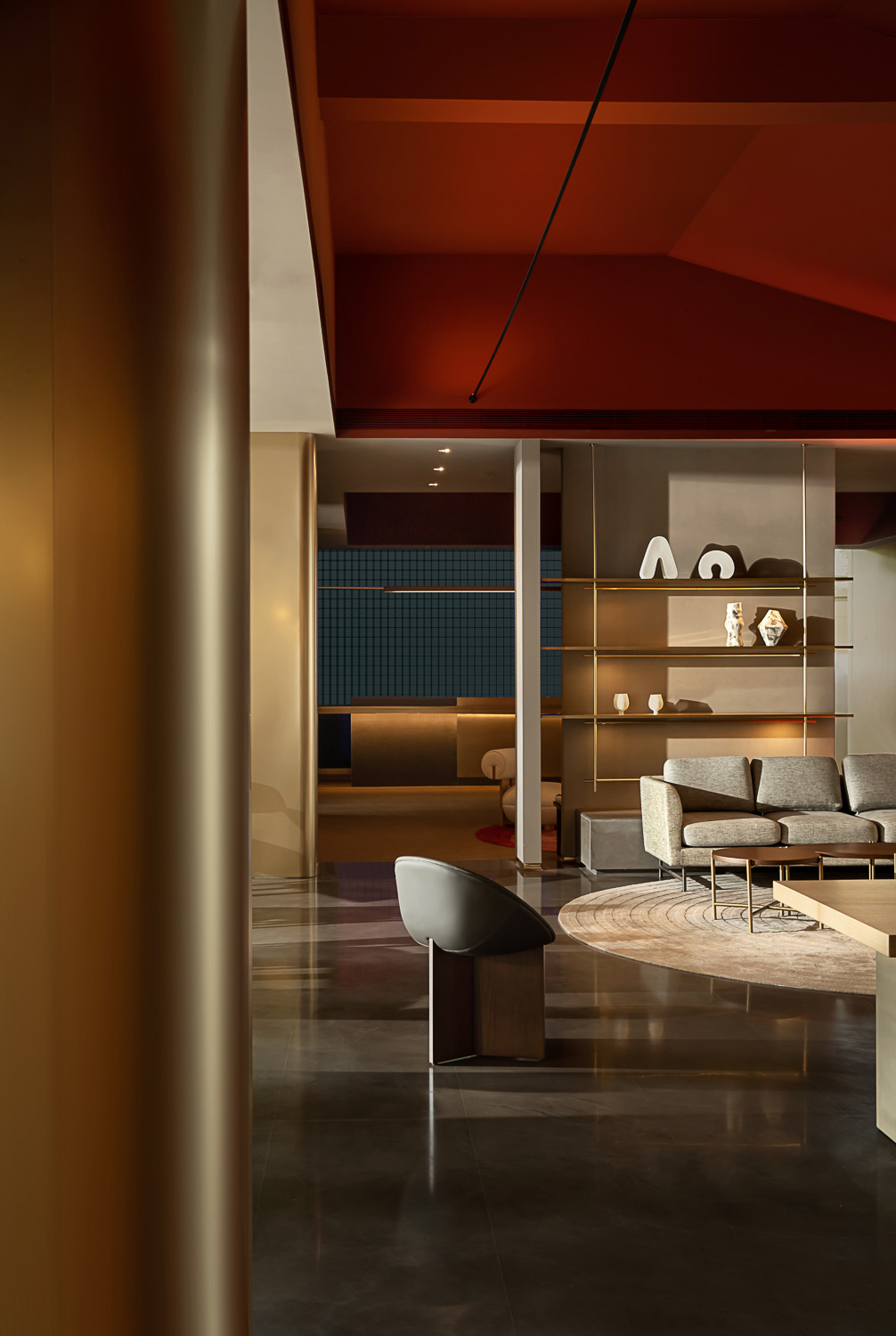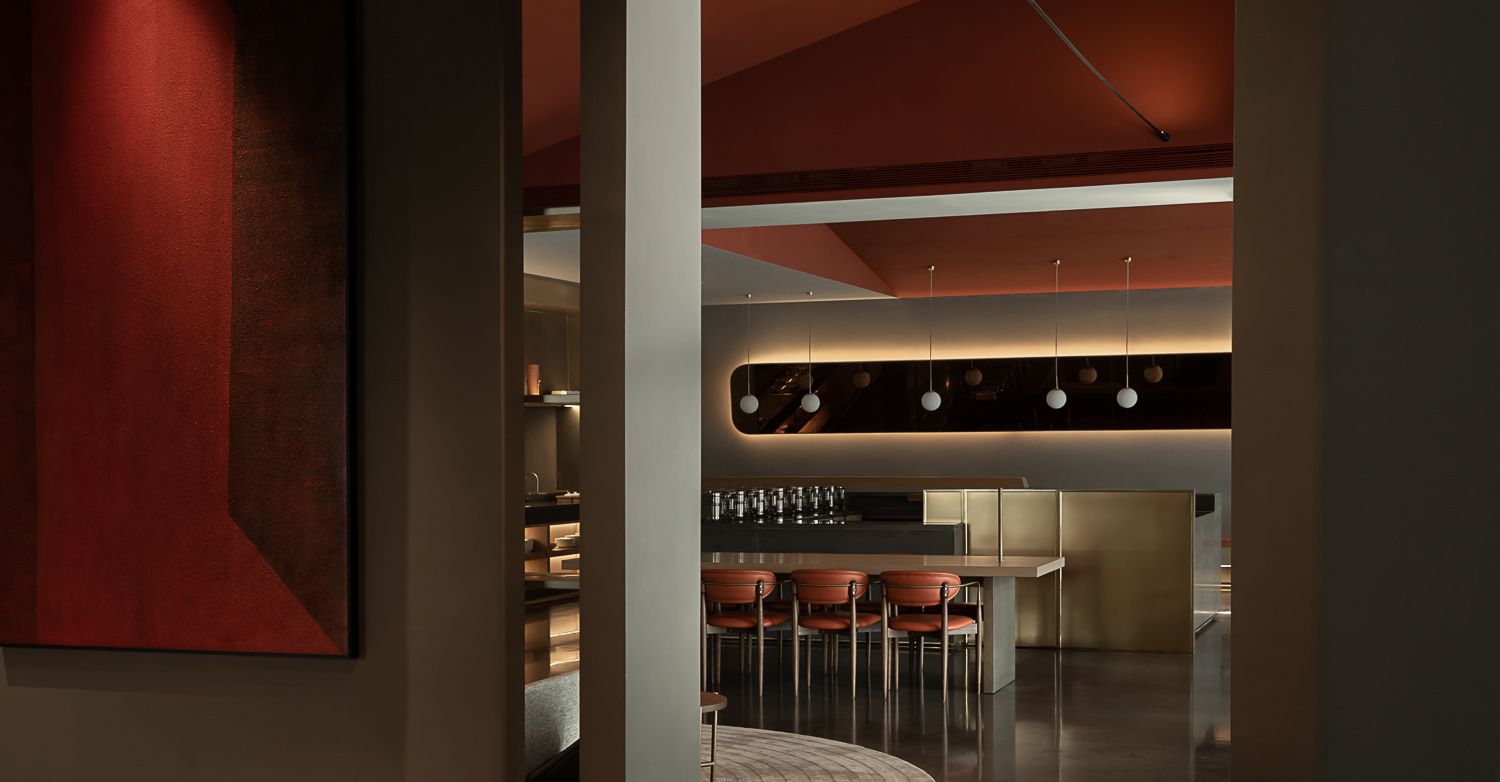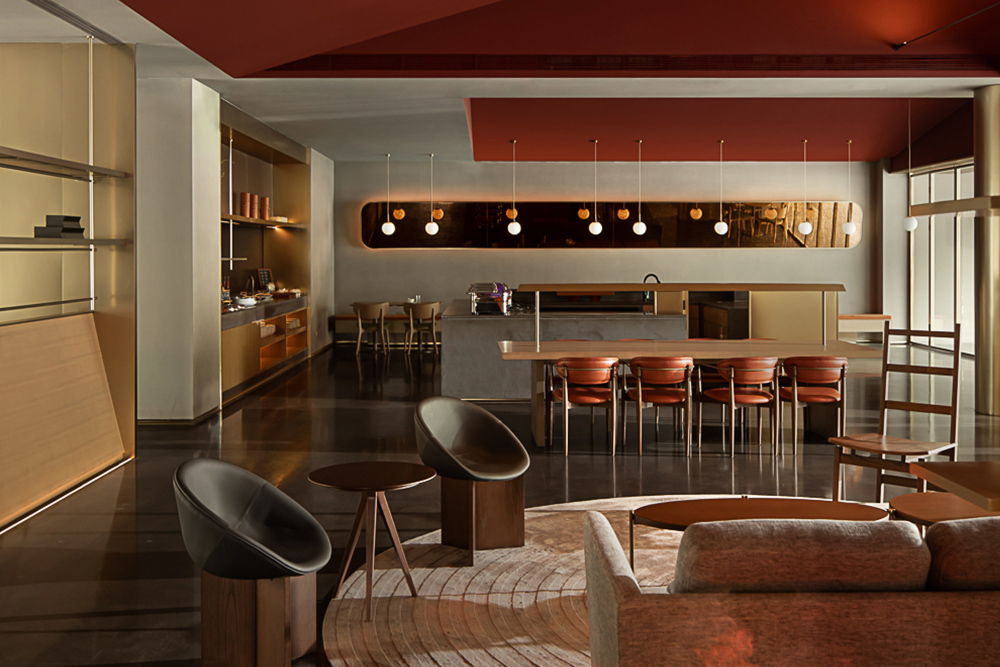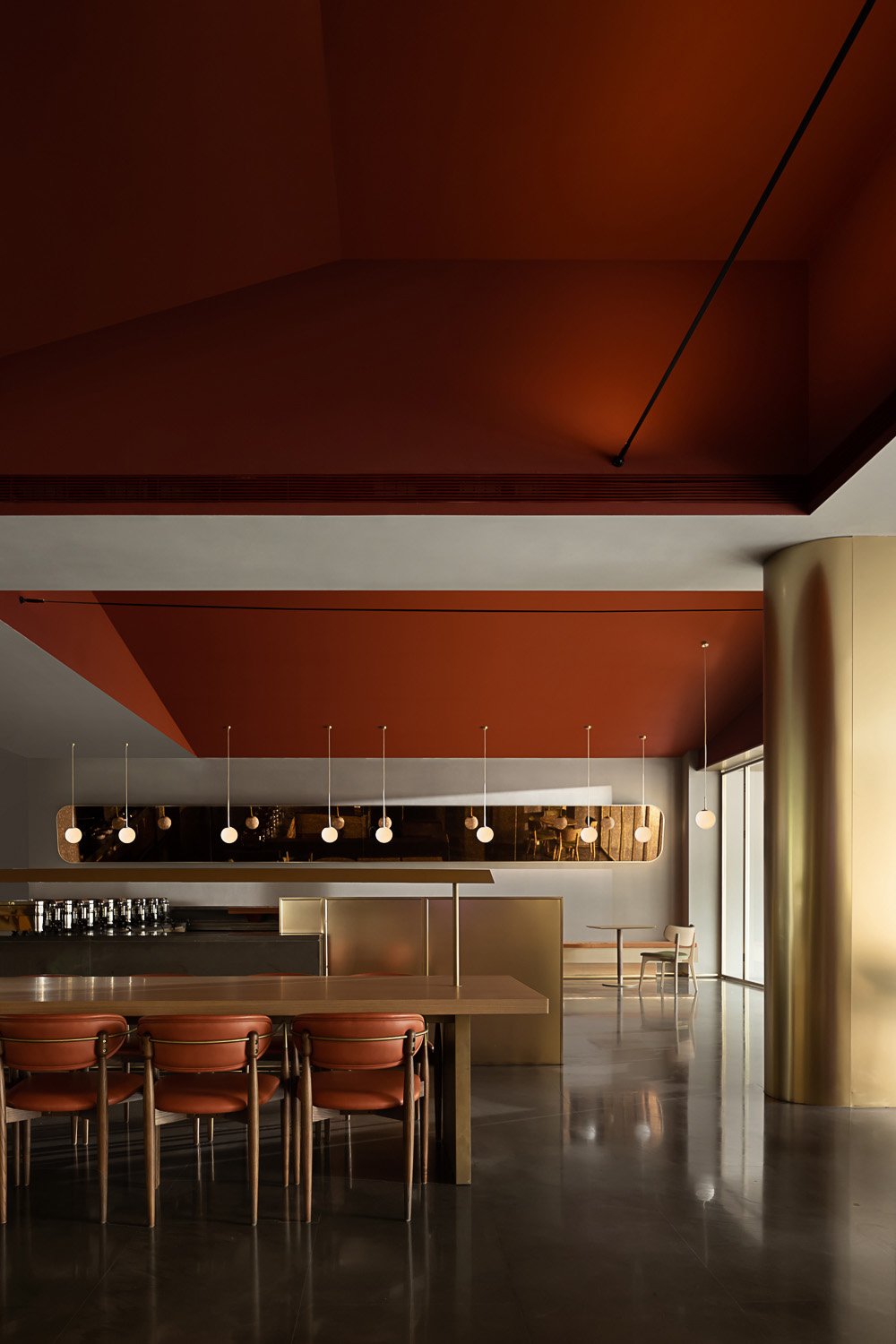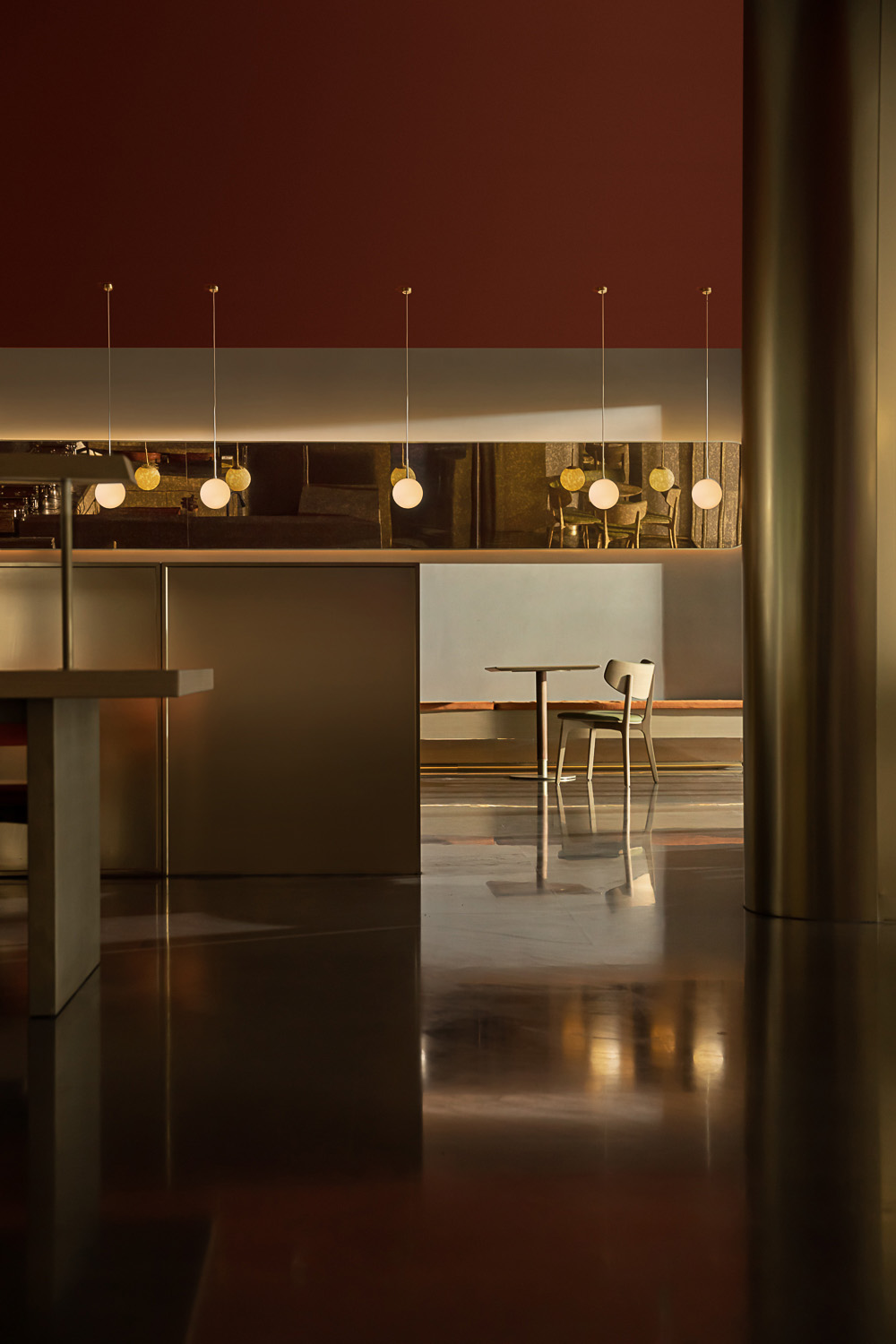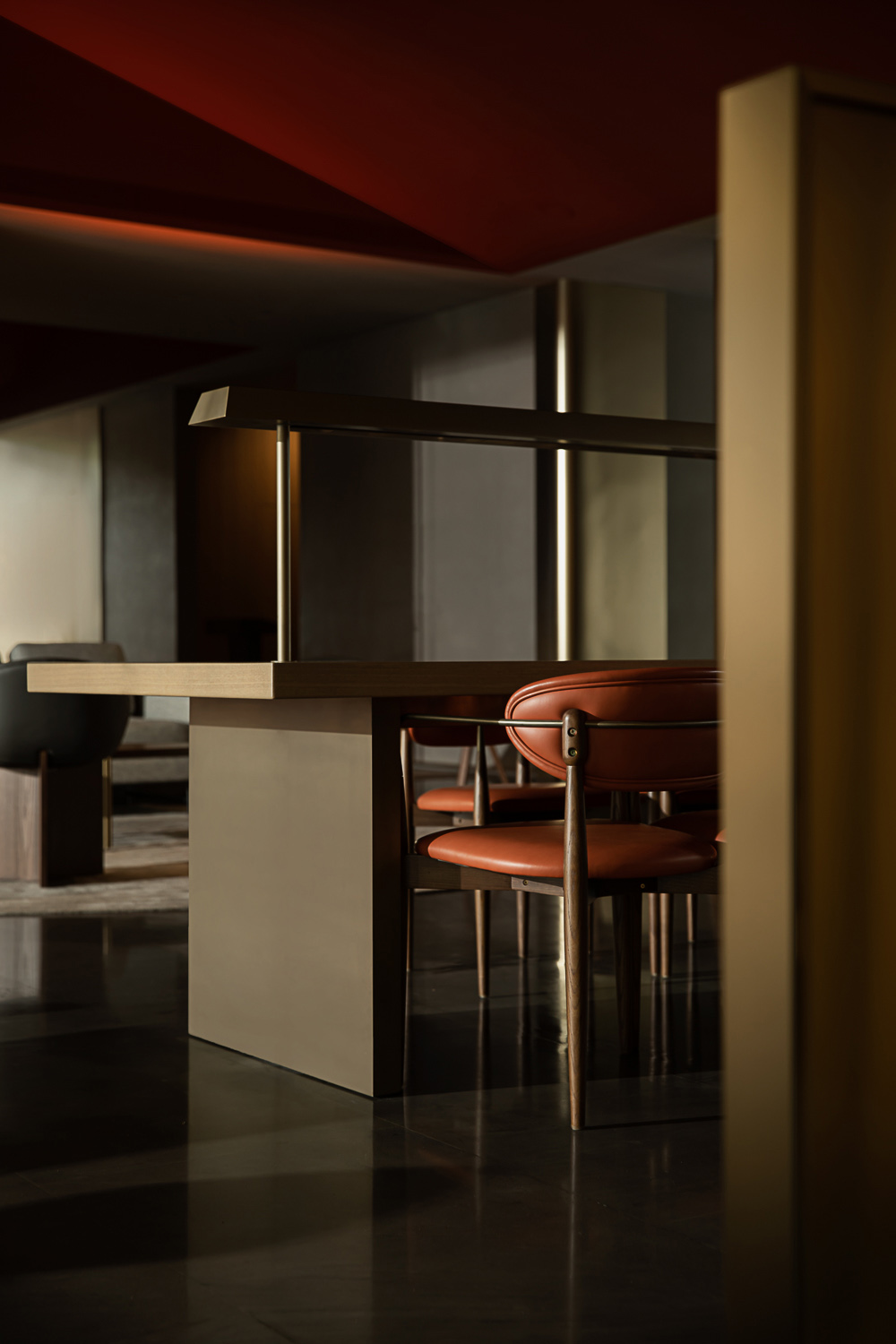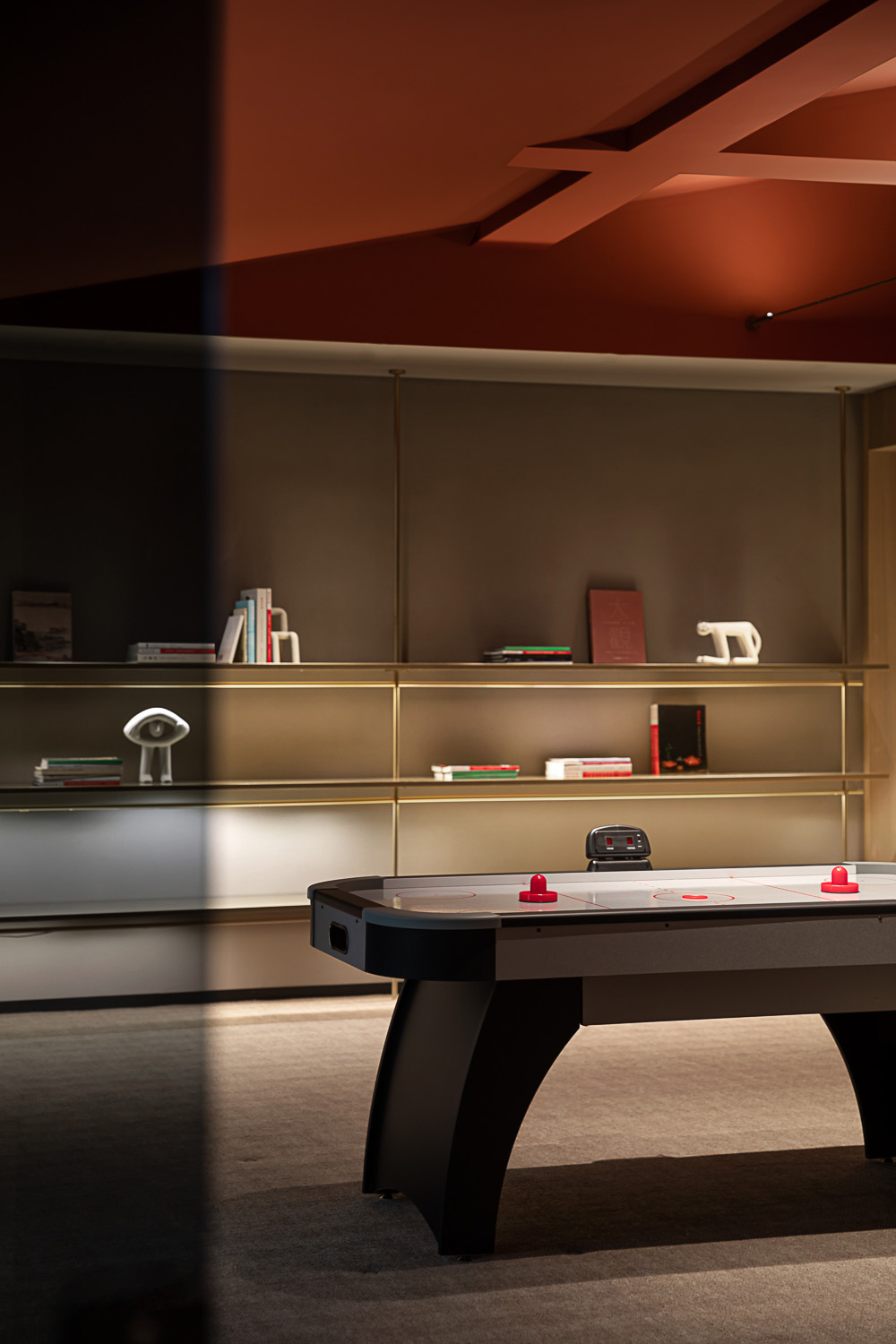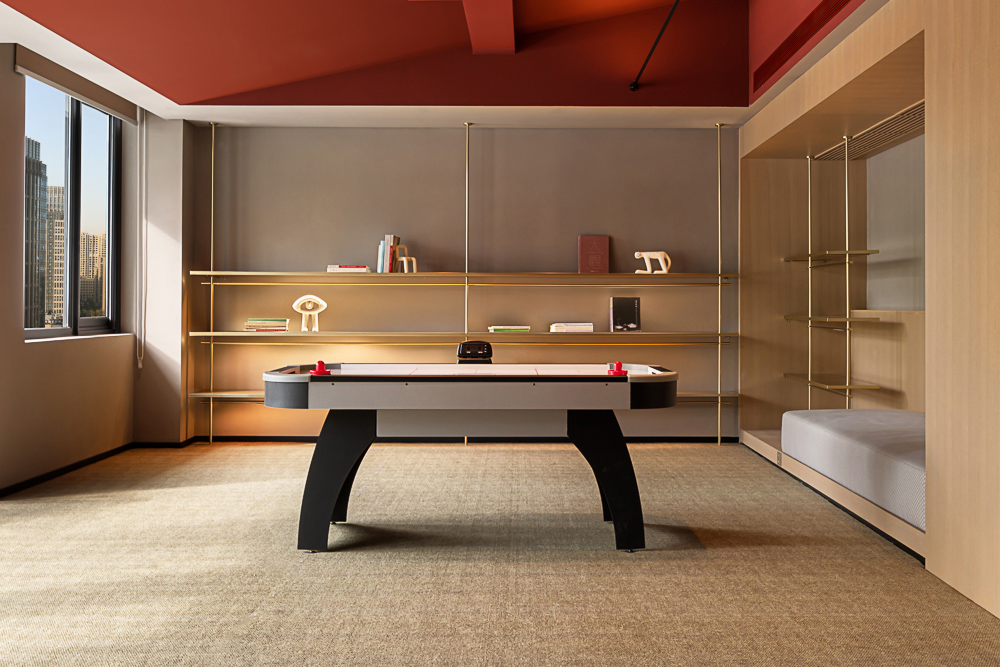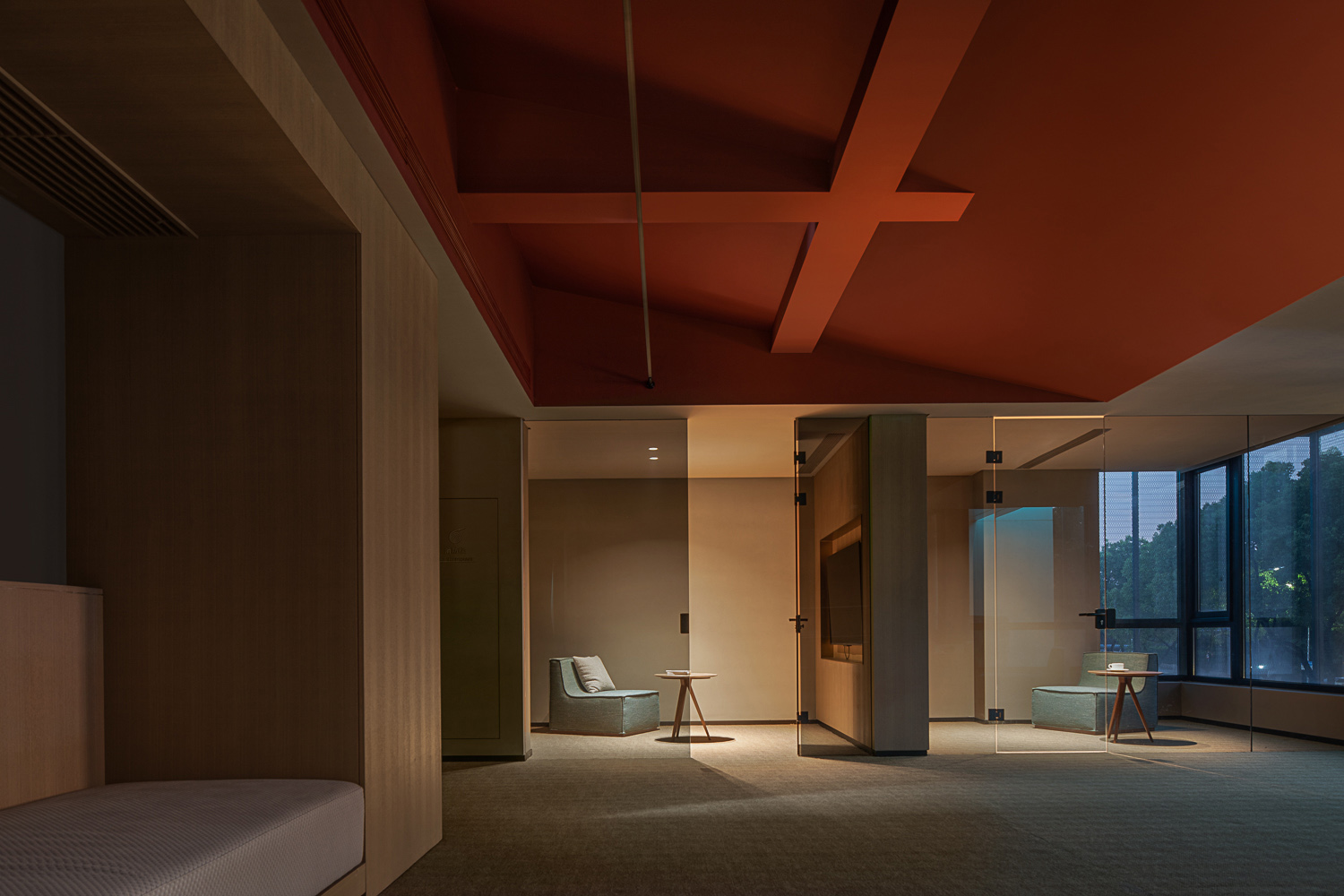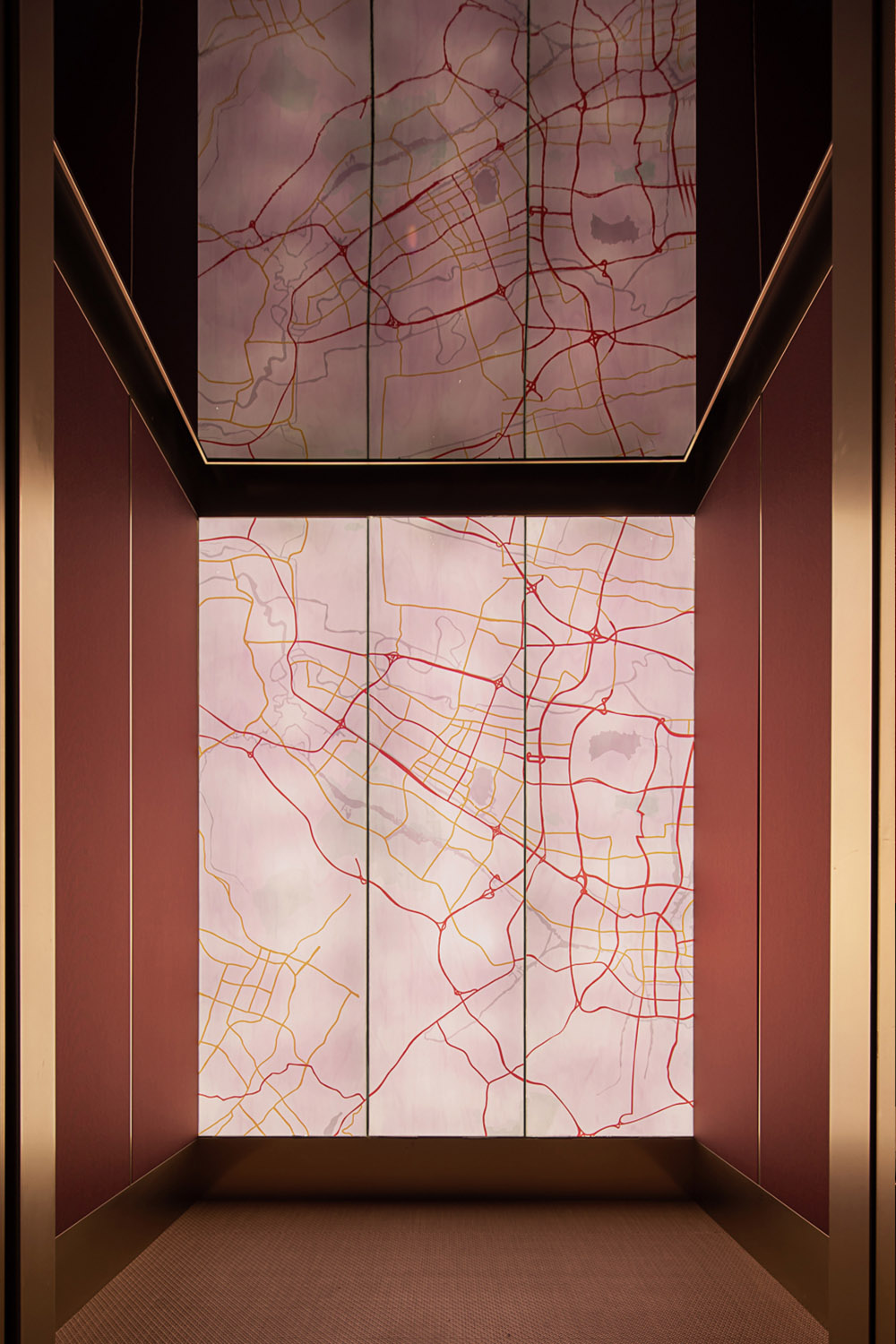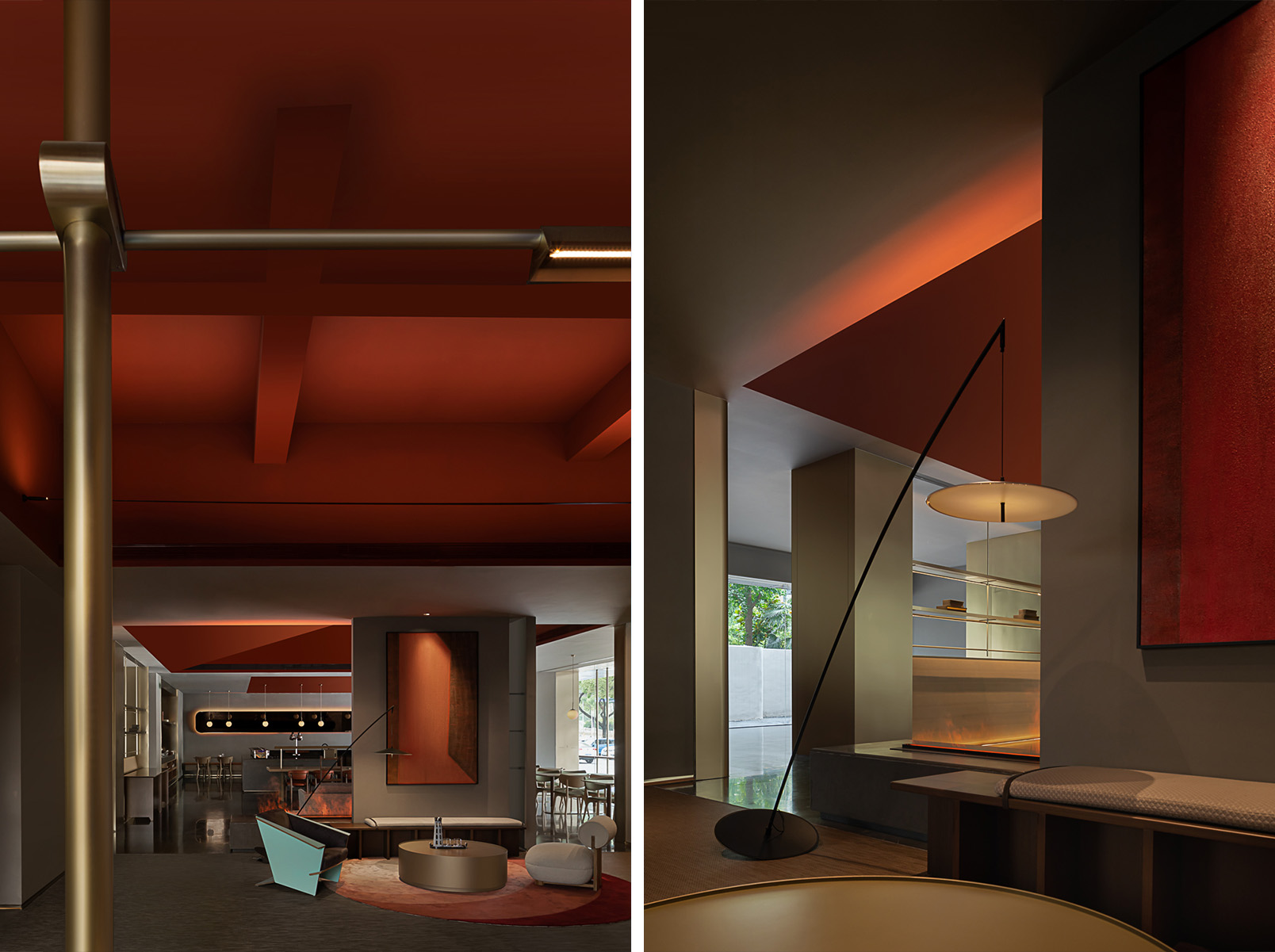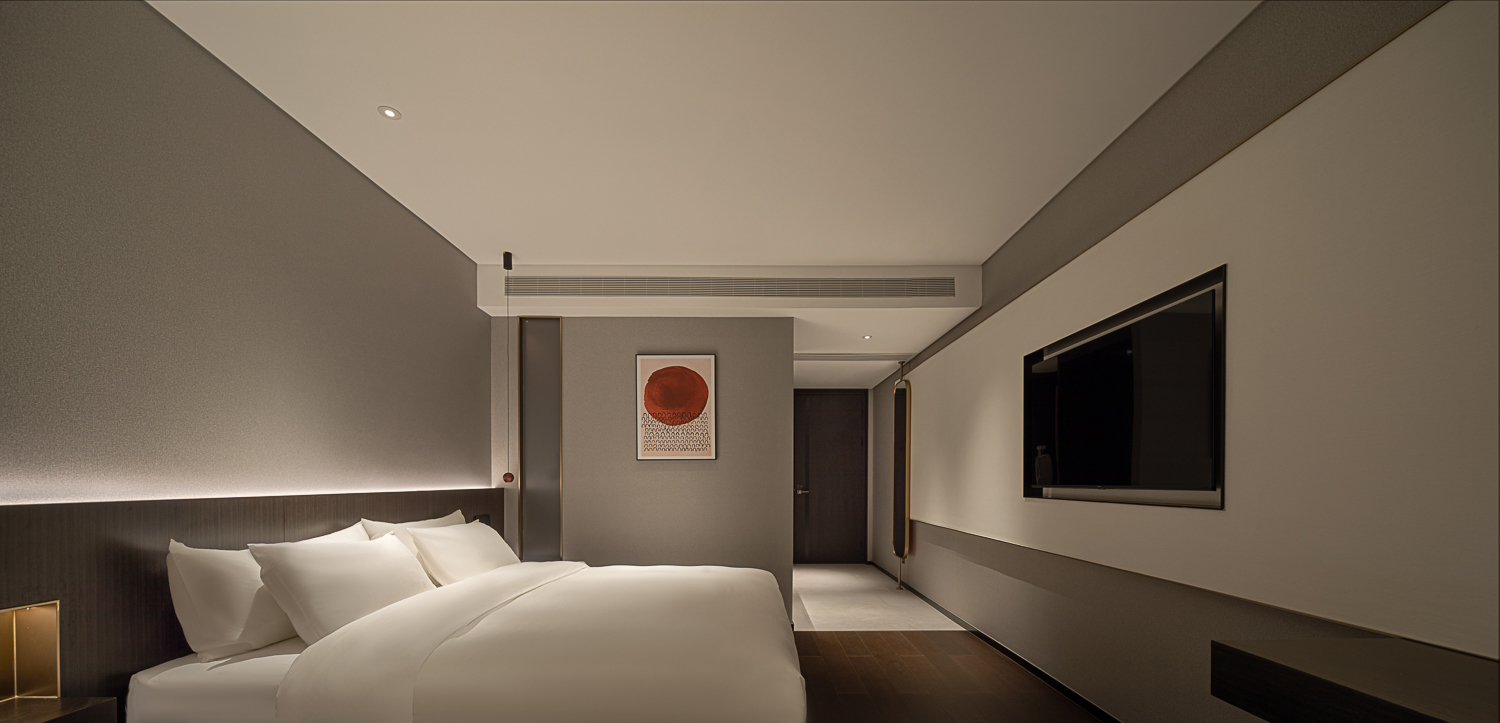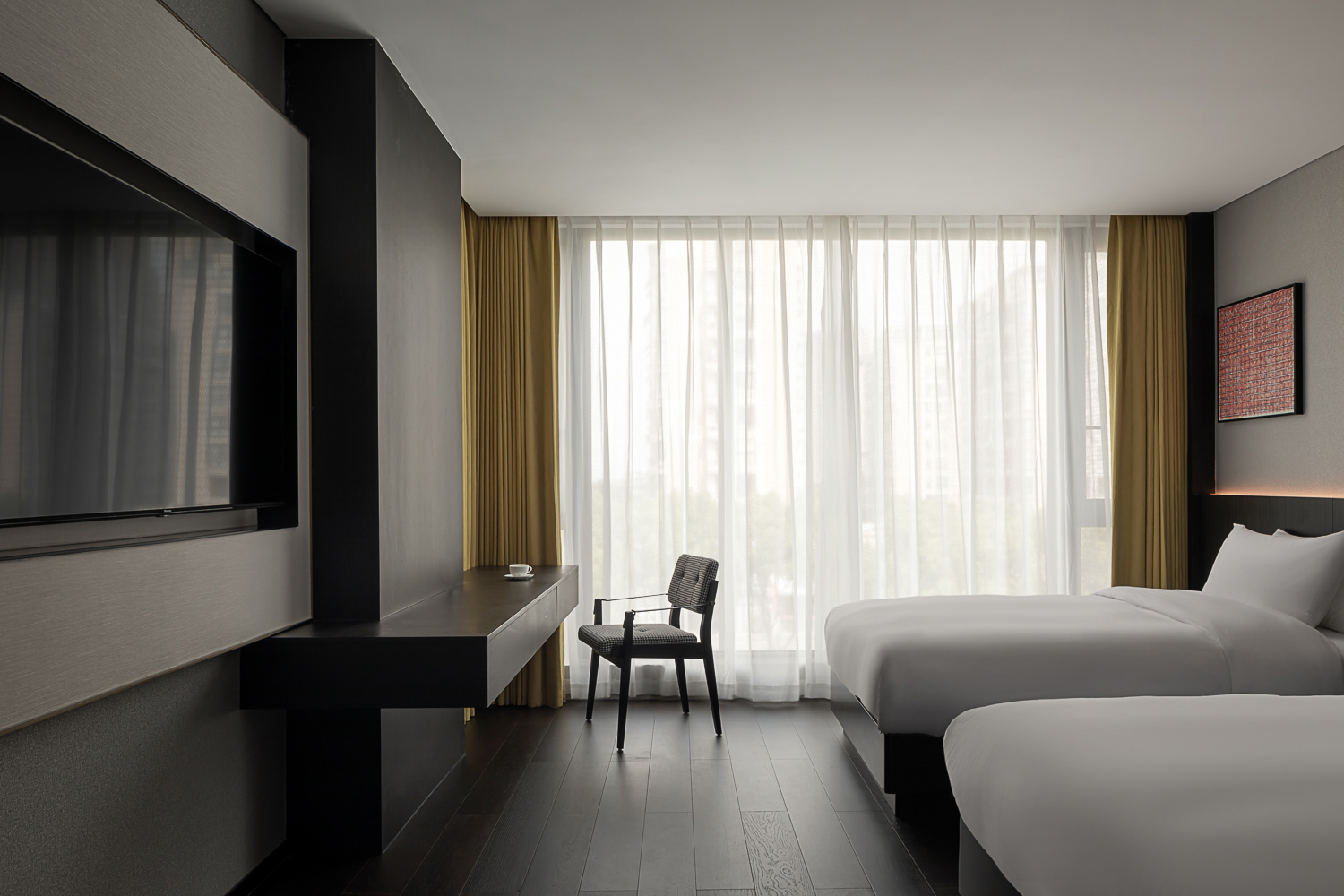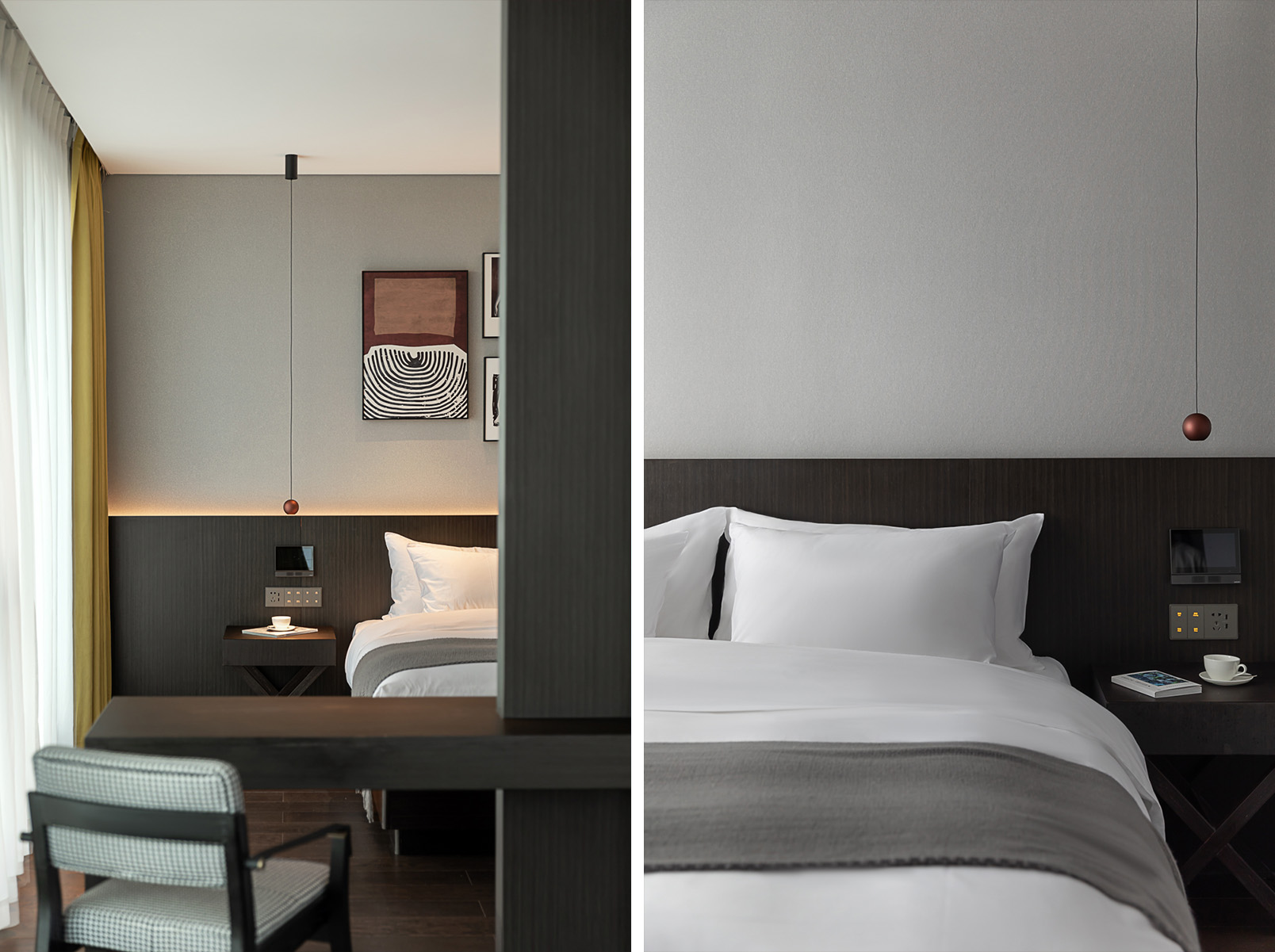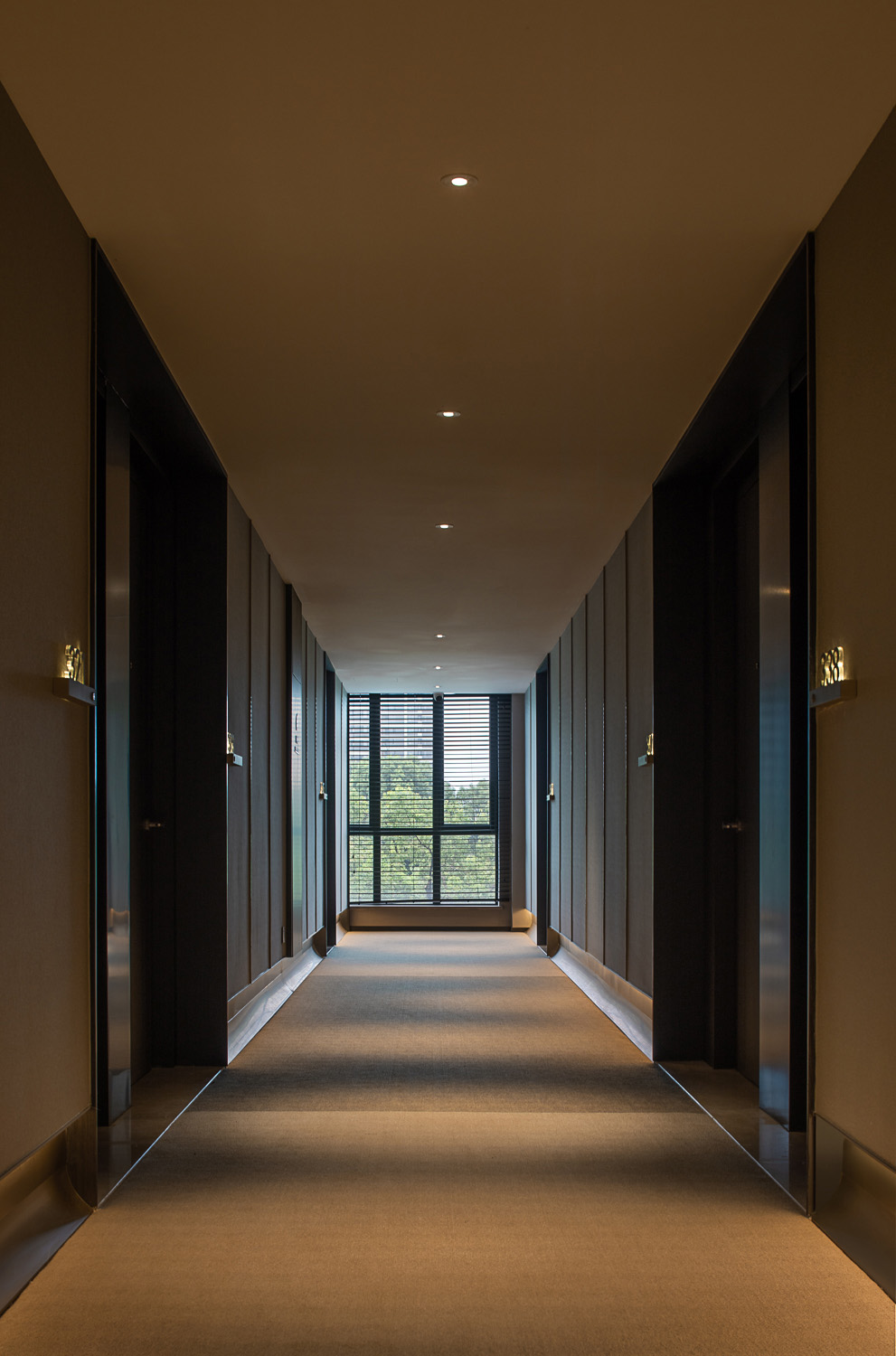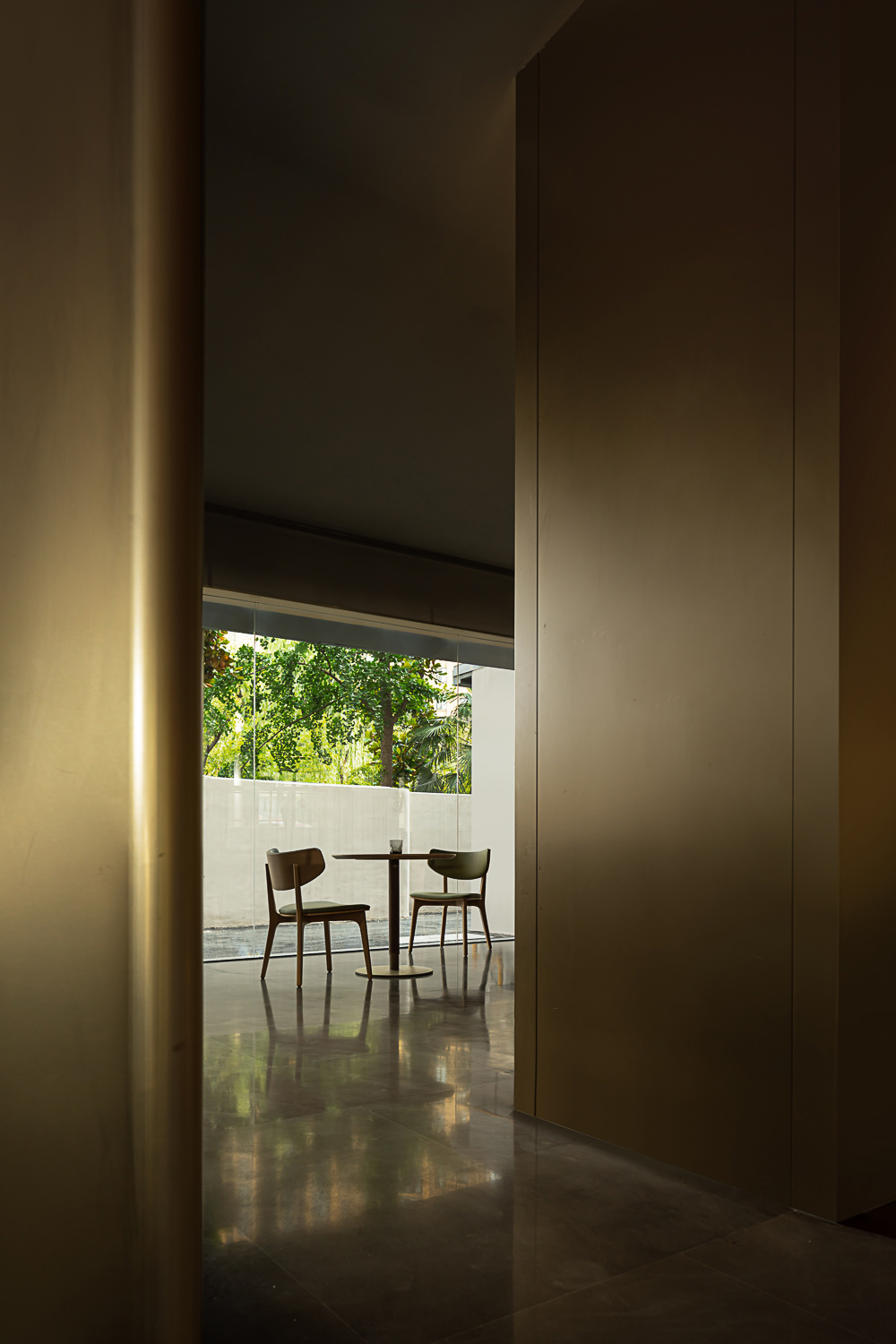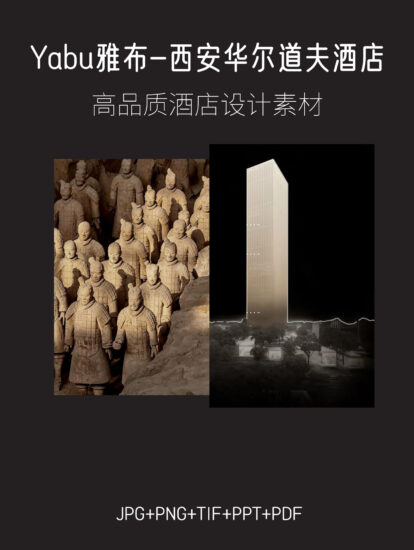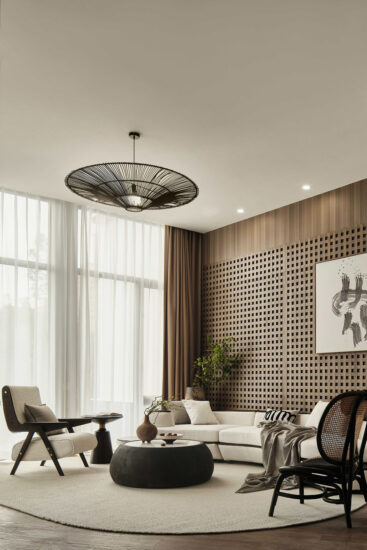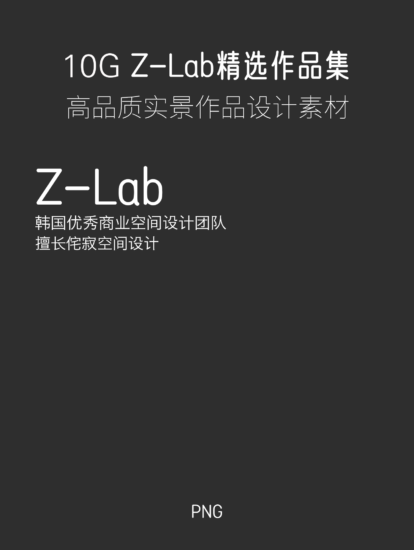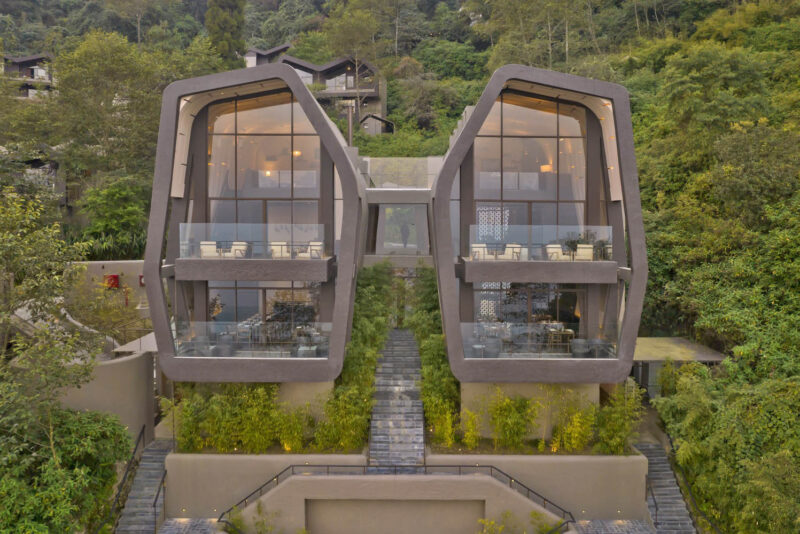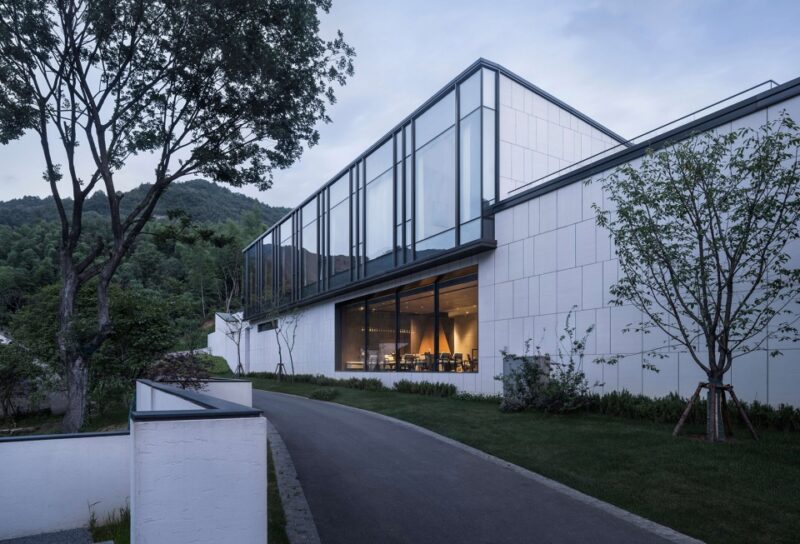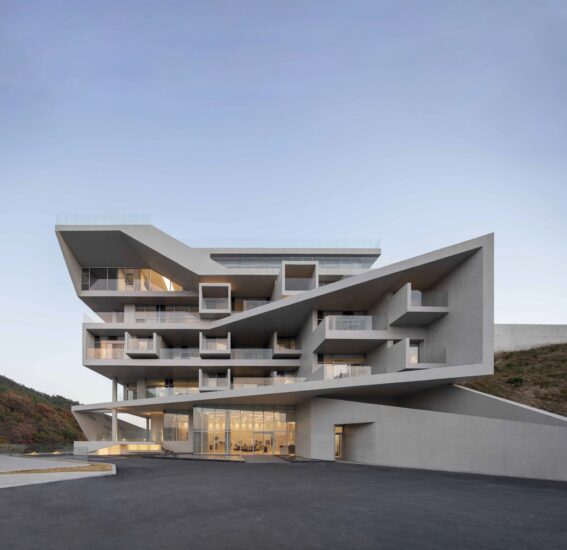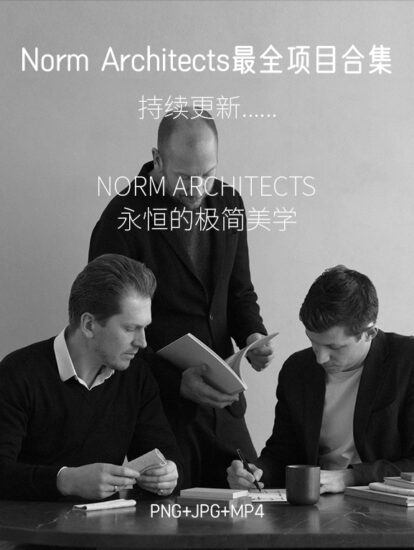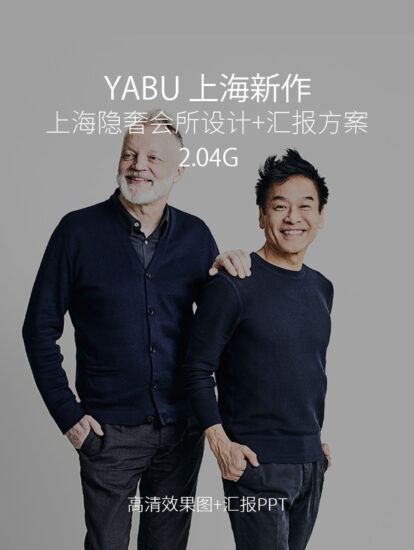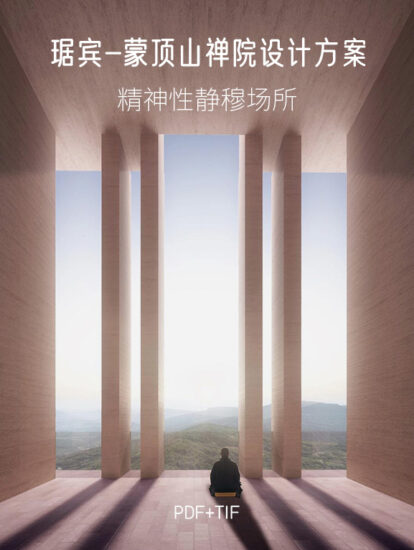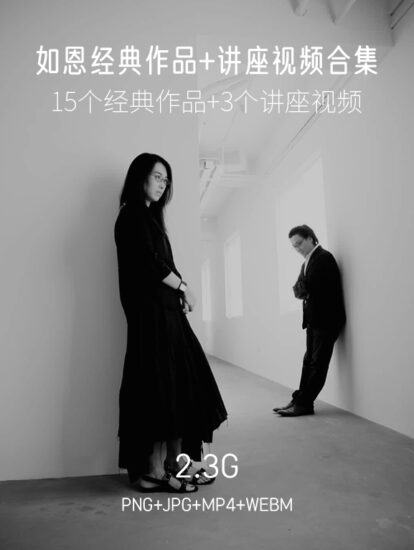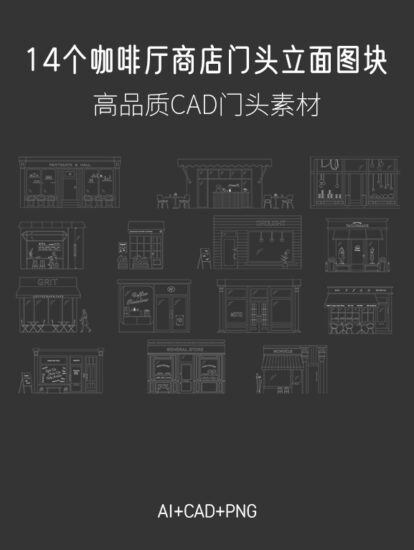安辰酒店的新舊交替,是新一代人和老一代人的交替,是思維觀念的交替,這一切都折射著這座城市的變遷。時間讓一切都發生著變化,但沒有東西會真正消失,它隻是以另外的載體或形式重新出現。
The old and the new of Ansan Hotel is the alternation of two generations and their thinking concept. It reflects the change of the city. Time changes everything, but nothing will disappear. It just reappears in another carrier or form.
01 符號化+視覺識別
Symbolic + Visual recognition
在不同的曆史時期和地域中,建築物的形式和功能都反映了當時社會的文化特征和價值觀。當城市開始尋找自己的定位,並不斷強化自身的特點、打造城市品牌,城市中的建築、景觀隻有順應這個趨勢,才能形成足夠強烈的記憶點。從設計的角度來說,統一而可重複的設計元素和空間特征可以共同構成一種符號化的語言。建築物不僅僅是一個實物,更是一種商業符號。
In different historical periods and regions, the forms and functions of buildings reflect the cultural characteristics and values of the society at that time. When cities start to find their positioning and continue to strengthen their features and build city brands, the buildings and landscapes in cities can only form strong enough memory points if they follow this trend. From the design perspective, unified and repeatable design elements and spatial features can develop a symbolic language together. A building is not only a physical object but also a cultural symbol.
∇ 酒店⼊⼝空間 Entrance
萬境設計團隊帶著這種符號語言的思考,投入到紹興安辰酒店的設計之中。我們提出了一個以符號化、視覺識別為理念的改造方案,希望除了對酒店內部的改造,通過酒店外部的立麵、景觀的改造,讓建築物的外觀形式、材料和色彩傳達柯橋的地域特征和城市文化。
With this symbolic language in mind, WJ STUDIO put into the design of Shaoxing Ansan Hotel. We proposed a renovation plan with the concept of symbolization, hoping that in addition to the renovation of the hotel’s interior, the exterior facade and landscape of the hotel will be renovated so that the exterior form, material and colour of the building will convey the regional characteristics and urban culture of Keqiao.
∇ ⼤堂休閑等候區 Leisurearea
同時,我們將酒店的社交屬性轉化為設計手法,以酒店公共區域為依托,為酒店住客提供可以放鬆、交流的社交場所,並為線上平台更大範圍內的人們提供社群空間。將符號化和社區化這兩條設計目標提升到概念設計的層次,推動整個方案的發展,最終有效地提升了酒店的品牌識別度。
At the same time, we transformed the social attributes of the hotel into a design approach, using the public areas of the hotel as a basis to provide a small social place for hotel residents and young people in the surrounding community to interact and provide a shared space for people in a wider area on the online platform. The two design objectives of symbolization and communalization are enhanced to the level of conceptual design, which drives the development of the whole project and eventually improves the hotel’s brand identity.
02 公共性+對話性
Public+Dialogue
項目坐落於紹興柯橋古鎮,改造前的原建築是建於十年前的商務酒店,沿街立麵沒有任何地域或者品牌特征——一樓的門麵租給本地商戶,入口門麵全是透明玻璃,大堂裏隻有登記入住的前台,樓上的客房和外置的空調機位不會給人留下任何印象。
Located in the ancient town of Keqiao, Shaoxing, the original building before the renovation was a business hotel built ten years ago, with no regional or brand identity along the street facade – the first-floor facade was rented to local merchants, the entrance facade was all transparent glass, and the lobby had only a check-in front desk. At the same time, the upstairs rooms and air conditioning units did not leave any impression.
∇ 改造前外⽴⾯(圖⽚來⾃業主) Facade before renovation (from owner)
∇ 改造前⼤廳與客房(來⾃業主) Lobby&guest rooms before renovation(from owner)
事實上,這樣的建築隨著本世紀經濟快速發展而產生的大量商旅需求而興盛,遍布中國東部沿海地區的大小城市,如今卻已隱藏在城市界麵的背景之中。
Such buildings, which flourished with the massive demand for business travel generated by the century’s rapid economic development, are scattered throughout cities in China but are now hidden in the background of the urban interface.
∇ 改造後外⽴⾯ Facade after renovation
形態的考慮從沿街的界麵入手。建築的一側被金屬網覆蓋,形成一個半透明的體量,與水平線條的燈帶相呼應。酒店室外景觀配套部分,在地麵上設計了與品牌導視係統結合的彩繪,引導行人、車輛進入酒店空間。
The considerations of architectural form start with the interface along the street. One side of the building is covered with metal mesh, creating a sheer volume that echoes the horizontal lines of the light strips.
∇ 酒店⼊⼝ Mainentrance
在首層的設計中,沿街的入口空間向內退讓,形成強烈的引導性和歡迎的姿態,與旁邊的餐廳共同形成完整的櫥窗感,與室外的城市形成一種對話的關係。
In the first floor’s design, the entrance space along the street is set back inward to create a strong guiding and welcoming gesture, and together with the adjacent restaurant, they form a complete sense of a window, creating a dialogue with the city outside.
∇ 餐廳外擺區 Outdoordining area
頂麵的金屬材質形成一種低調、奢華的品質,柔和的燈光為整個餐廳空間形成了一種電影般的氛圍,最外側的金屬杆件仿佛幾根疏密有致的竹子,將婆娑的竹影和江南的溫潤投射到室內空間之中。
The metal on the ceiling forms an understated, luxurious quality, and the soft lighting creates a cinematic atmosphere for the entire restaurant space. The outermost metal rods resemble a few sparse bamboos, projecting the hovering bamboo shadows and the warmth of Jiangnan into the interior space.
∇ 餐區 Diningarea
設計對室內和室外空間,公共與私密空間運用了再創造的手法,在尊重原有場地的同時創造出一種新鮮感,並讓那些厭倦了城市商務酒店、渴望擁有與眾不同空間體驗的客人們耳目一新。
The design uses a reinvention of indoor and outdoor spaces, public and private, to create a sense of freshness while respecting the original site and to refresh guests who are tired of urban business hotels and desire a different spatial experience.
03 潮流+社交
Young+Social
在首層的酒店大堂和餐廳部分,大膽地采用了橘紅色的頂麵,前台的LED燈光展現出一種極強的色彩張力,提醒著客人酒店年輕、潮流的品牌文化。
On the first floor, the hotel’s lobby and restaurant are boldly decorated with orange roofing and the LED lighting in the background of the front desk, creating a solid colour tension and reminding guests of the hotel’s young, trendy brand culture.
∇ 酒店⼤堂 Lobby
∇ LED屏幕細節 LED screendetails
∇ 休息區與餐區 Rest&diningareas
我們在二層設計了一個供住客使用的活動空間,由兩個相對私密和安靜的遊戲室和一個寬敞的公共休閑區組成,可供住客在工作、旅遊之餘提供娛樂,或在窗邊欣賞城市街景。
We designed a comon space for travellers on the second floor, consisting of two relatively private and quiet game rooms and a spacious public lounge area that can be used to provide entertainment after work or travel or to enjoy the city streetscape from the window.
∇ 休閑與冰球區 Leisure&tableicehockeyarea
聚集在此的人可以放肆玩樂,也能在陌生的人群裏擁有自己的“邊界”。這裏是一個讓人能夠盡情享受自由、同時又能夠與社區互動的小型社交場所,社區化的活動空間將更加豐富住客的整體感受。
Those who gather here can have fun and have their own “boundaries” in a strange crowd. It is a small social place where people can enjoy their freedom and interact with the community simultaneously. The community-oriented event space will enrich the overall experience of the traveller.
∇ 遊戲室 Game rooms
同一樓餐廳一樣,二樓休閑區域的連續落地窗,也展現了與城市交流對話的姿態。樹蔭和城市景觀映入室內,同時城市中經過的人們也可抬頭看到休閑區域天花上的一抹紅色。隻要願意稍作超越,熱鬧與寂靜便能交融。
Like the restaurant on the same floor, the continuous floor-to-ceiling windows of the second-floor lounge area reveal a gesture of communication and dialogue with the city. Shade and city views are reflected inside, while people passing through the city can look up and see a splash of red on the ceiling of the lounge area. With a bit of transcendence, the lively and the silent can mingle.
∇ 電梯轎廂 Elevatorcabin
∇ ⼤堂等候區 Waitingarea
空間中隱藏著很多待客人發現的小驚喜:入口前廳充滿雕塑感的幾何造型的燈具,大堂牆上巨幅的抽象油畫和折紙一般的扶手椅,電梯轎廂裏不期而遇的巨幅城市地圖等。
There are many little surprises hidden in the space for guests to discover: the sculptural geometric light fixtures at the end of the corridor, the abstract painting on the living room wall and the origami-like armchair, the giant city map in the elevator car.
04 休閑+藝術
Leisure+Art
設計師希望通過符號化的空間元素來塑造城市酒店獨特的居住體驗。客房的設計以深胡桃木和米白色織物為主要材質,為住客創造一種放鬆的、家的感受。
The designer wanted to shape the unique living experience of the city hotel through symbolic spatial elements. The guest rooms are designed with dark walnut and beige fabrics to create a relaxing, home-like feeling for the residents.
點綴的黃銅元素不僅增強了空間的藝術性和美感,帶給客房一種商務的氛圍和放鬆舒適的居家感,也在一定程度上延續了酒店公共空間的設計語言。
The embellished brass elements not only enhance the artistry and beauty of the space, bring a business-like atmosphere and a relaxed and comfortable home feeling to the guest rooms, but also continue the design language of the hotel’s public space to a certain extent.
∇ ⾛廊 Corridor
∇ 餐區 Diningarea
紹興安辰酒店設計以符號化語言為理念,通過對建築與室內空間形式、材料和色彩的改造,為城市商務酒店中的旅人,創造一種親密又疏離、模糊又清晰的界限。這種充滿“邊界感”的社群空間,成為酒店空間體驗的一部分,最終沉澱在品牌故事之中。
Ansan Hotel’s design takes symbolic language as the concept, transforming the building’s form, material, color, and interior space to create a personal yet detached, blurred yet clear boundary for the travelers in the urban business hotel. This community space becomes part of the customer’s experience and is finally immersed in the brand story.
項目信息
項目地點:浙江紹興
竣工時間:2023.1
項目類型:酒店
項目麵積:5000㎡
業主單位:紹興柯橋自宜安辰酒店管理有限公司
建築改造及室內設計:WJ STUDIO 萬境設計
主創設計:胡之樂
設計團隊:劉宇翱、周舒逸、於浩東、張永慧
燈光設計:方方、易宗輝
項目攝影:瀚墨視覺-阿刁
Location: Shaoxing, Zhejiang
Completion Date: 2023.1
Type of Project: Hotel
Project Area: 5000㎡
Client: Shaoxing Keqiao Ziyi Ansan Hotel Management Co.
Architectural Renovation and Interior Design: WJ STUDIO
Principle Designer: Hu Zhile
Design Team: Liu Yu’ao, Zhou Shuyi, Yu Haodong, Zhang Yonghui
Lighting Design: Fang Fang, Yi Zonghui
Photographer: Robyn


